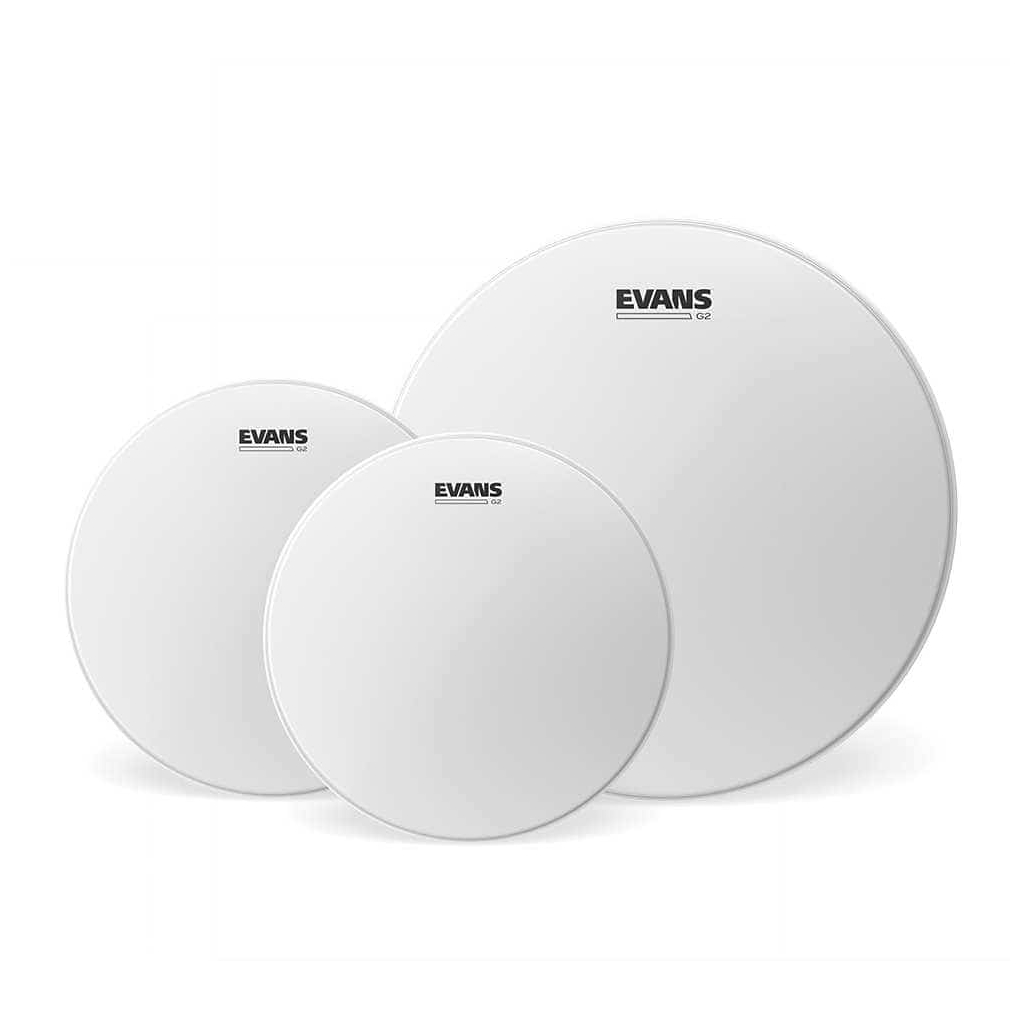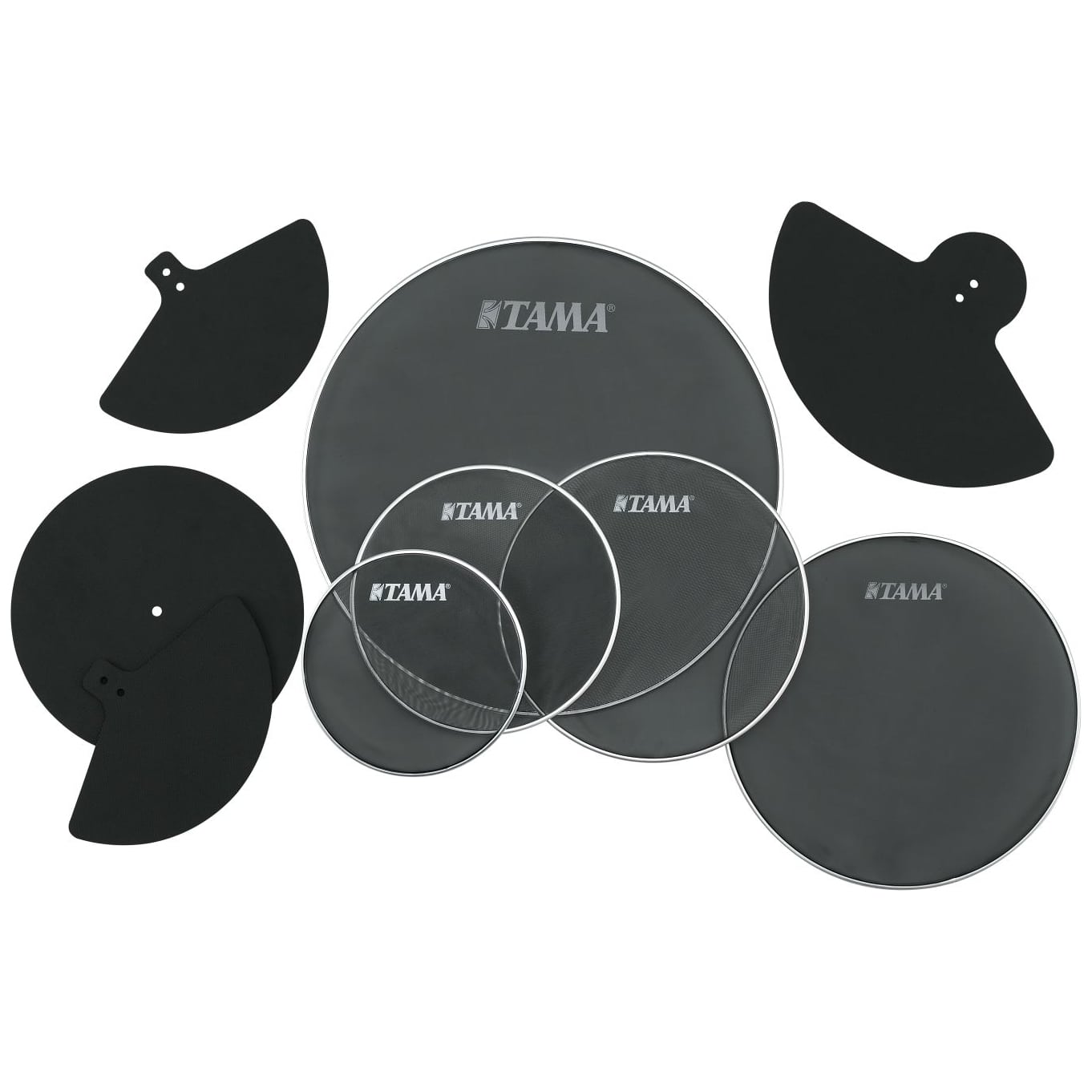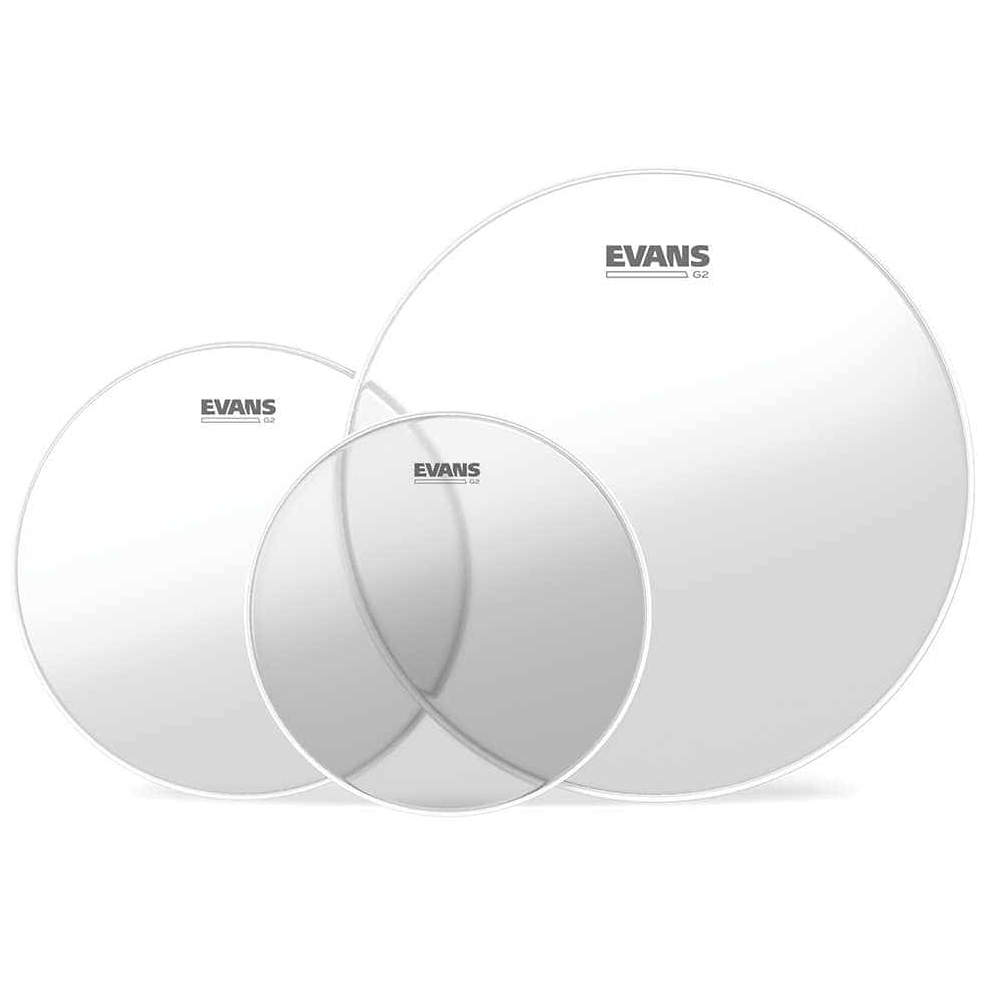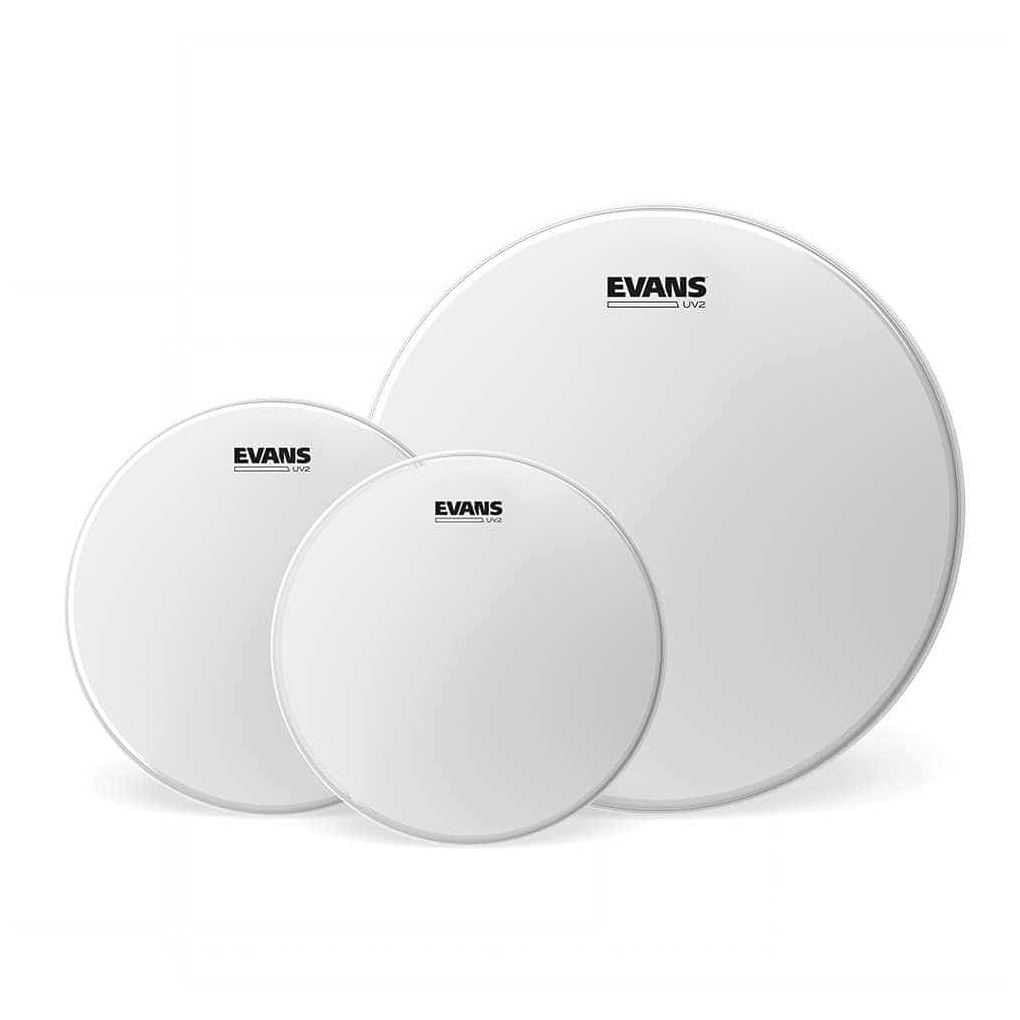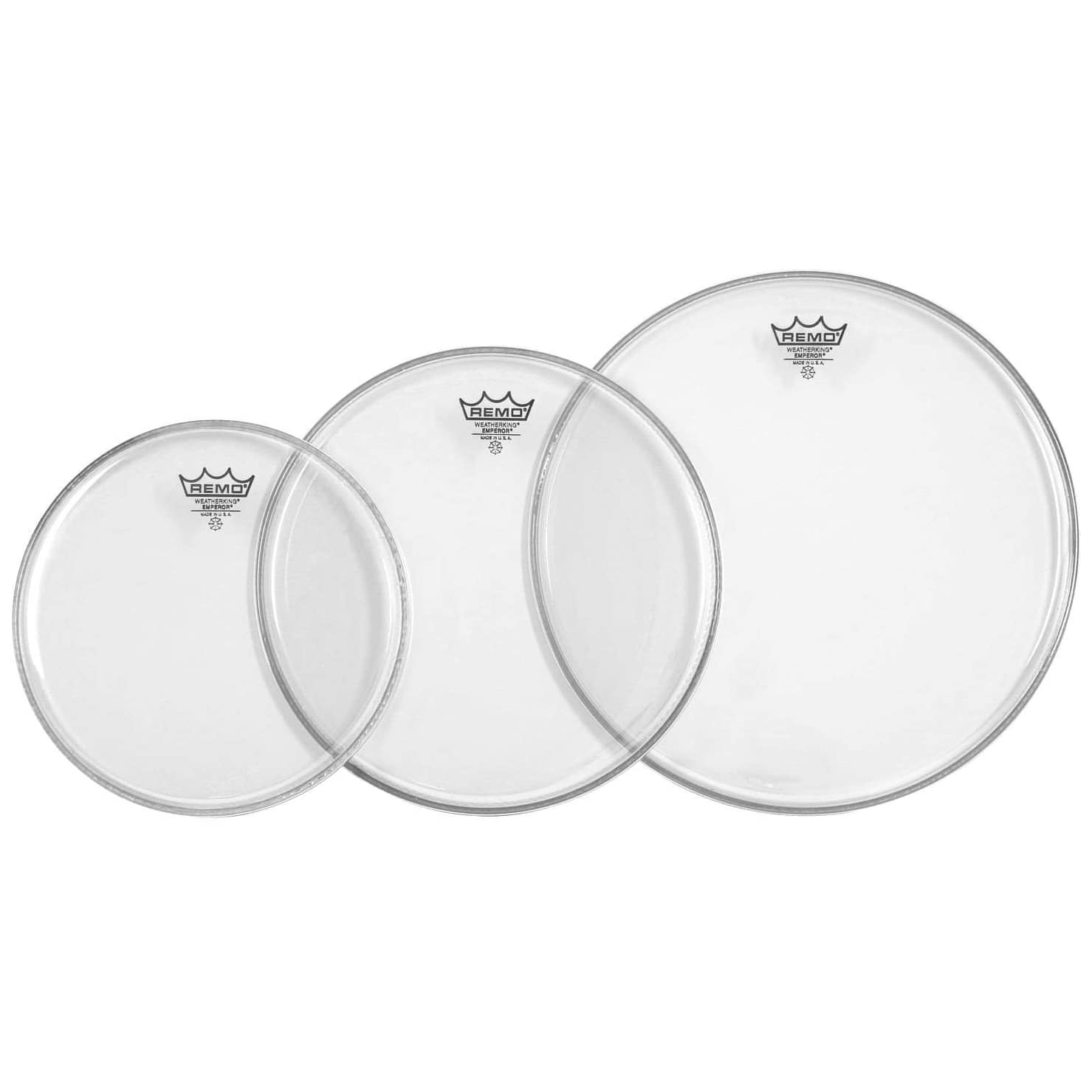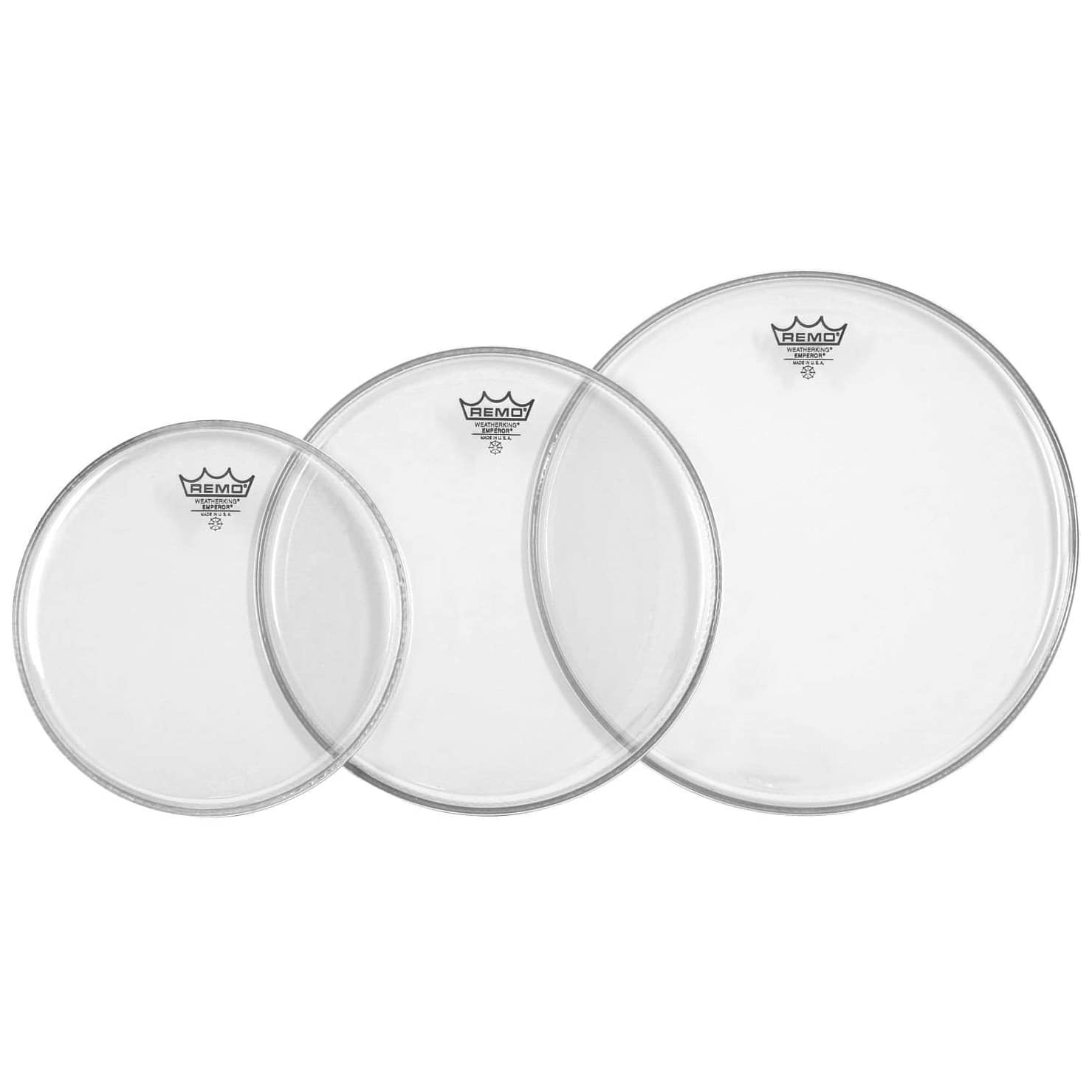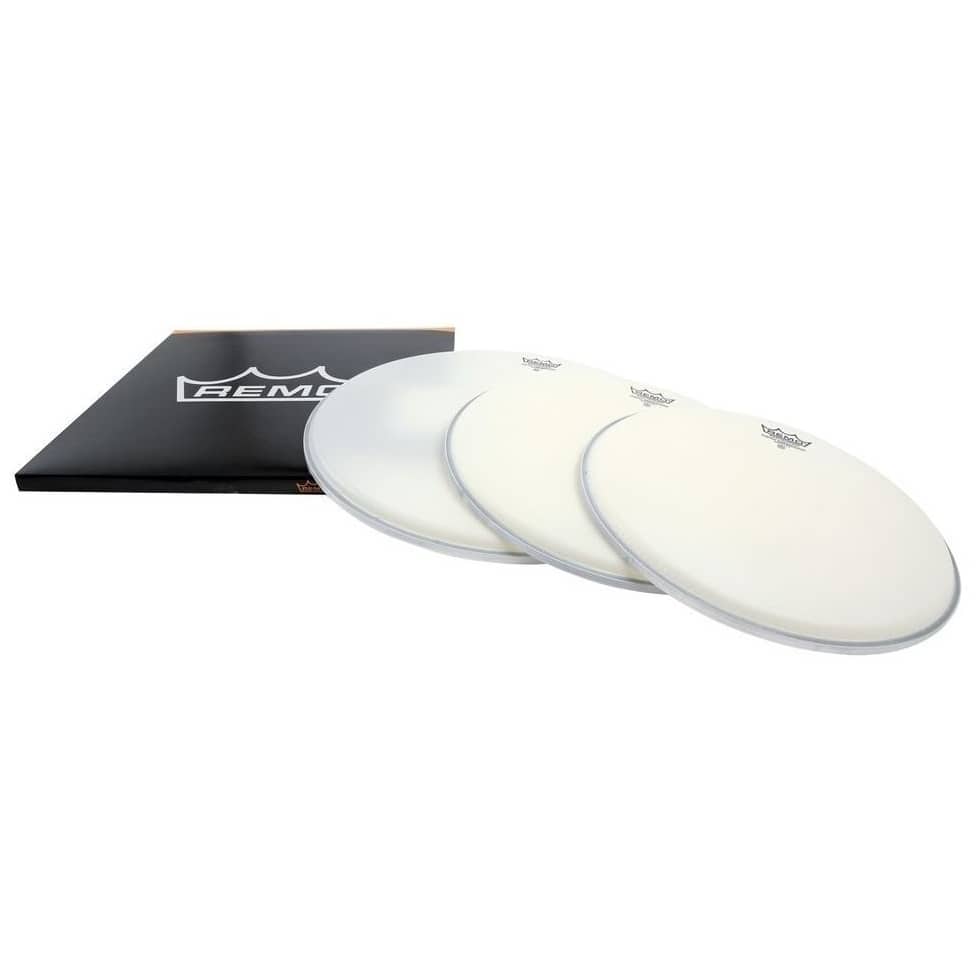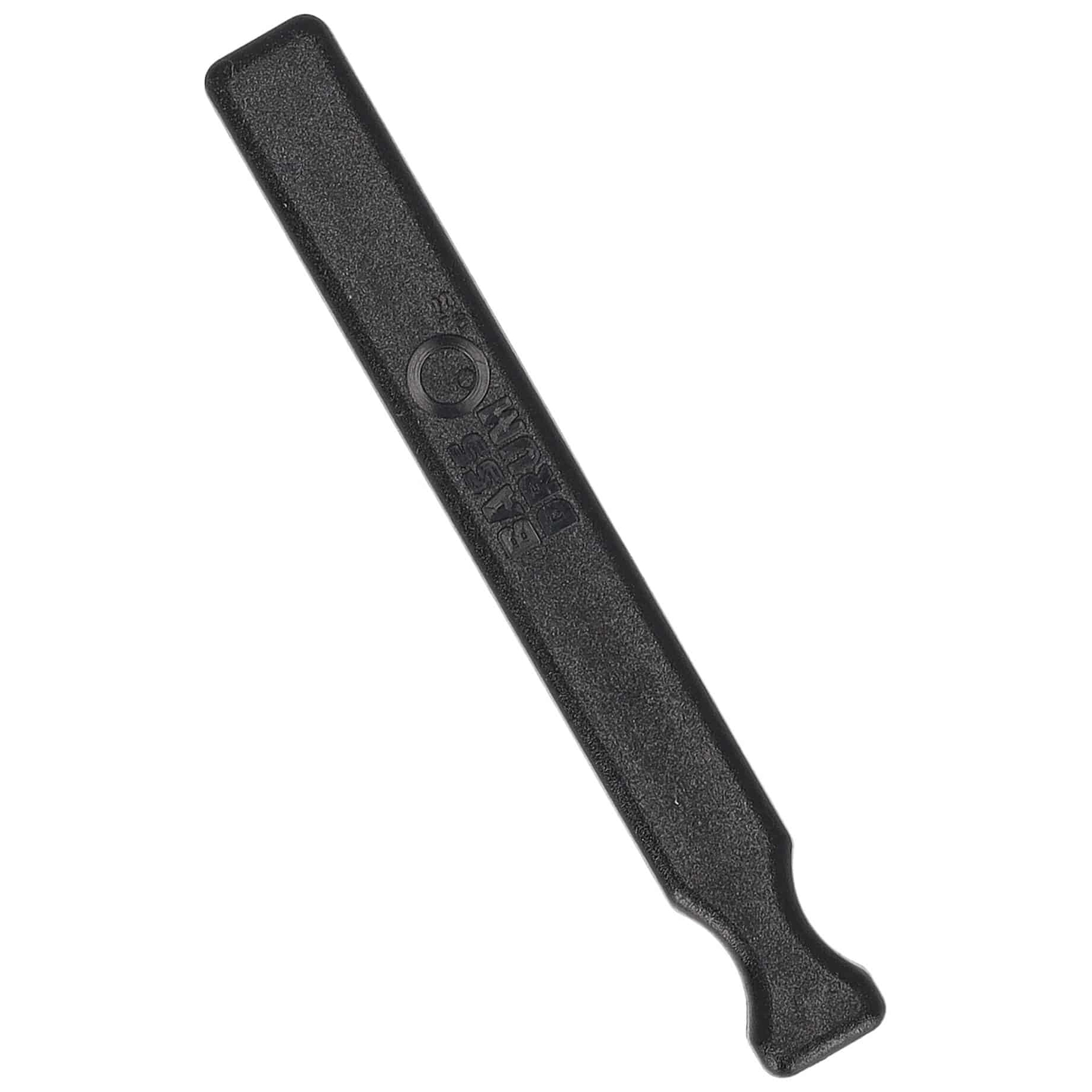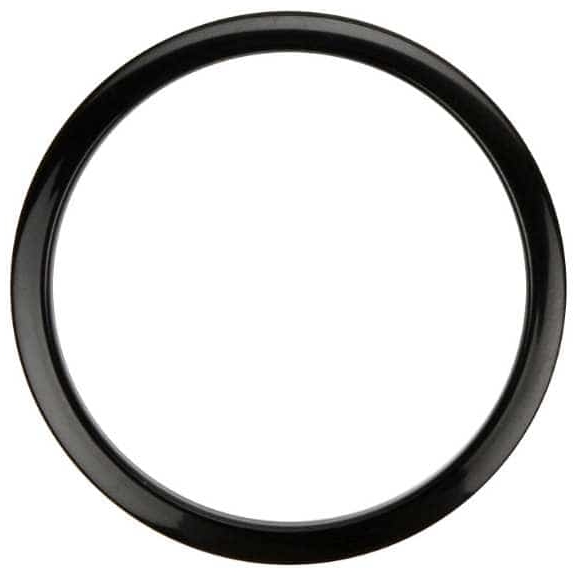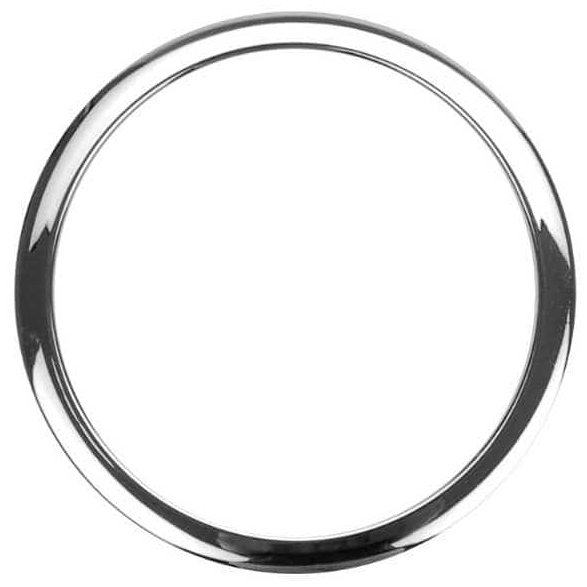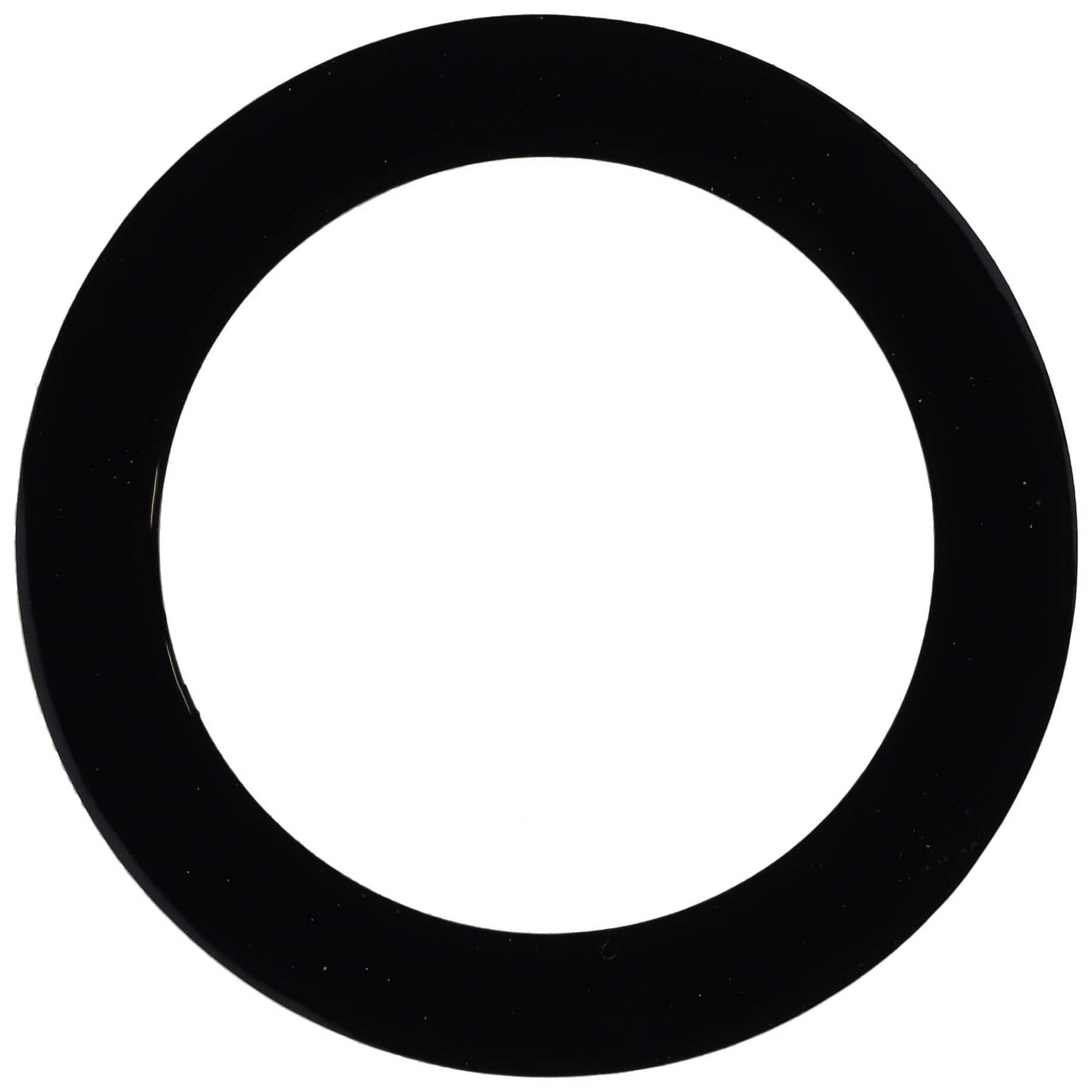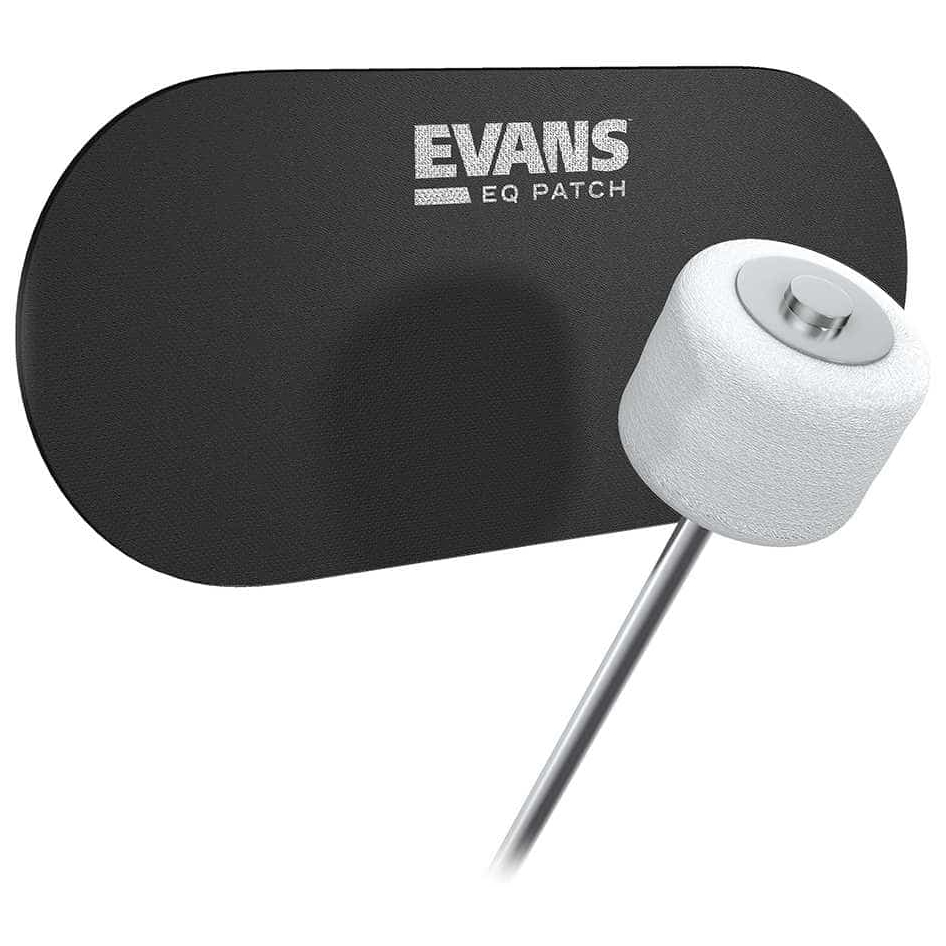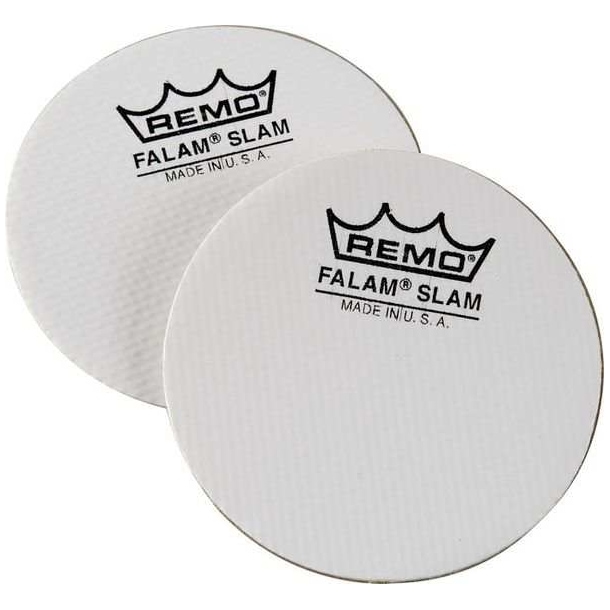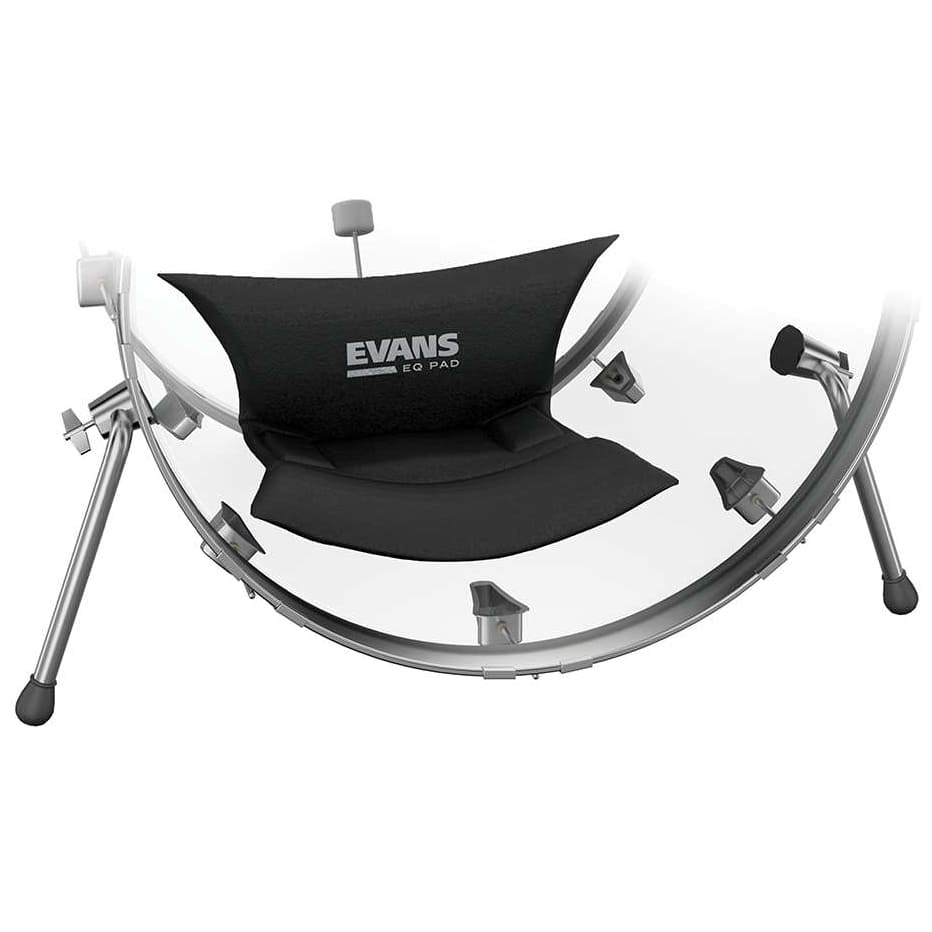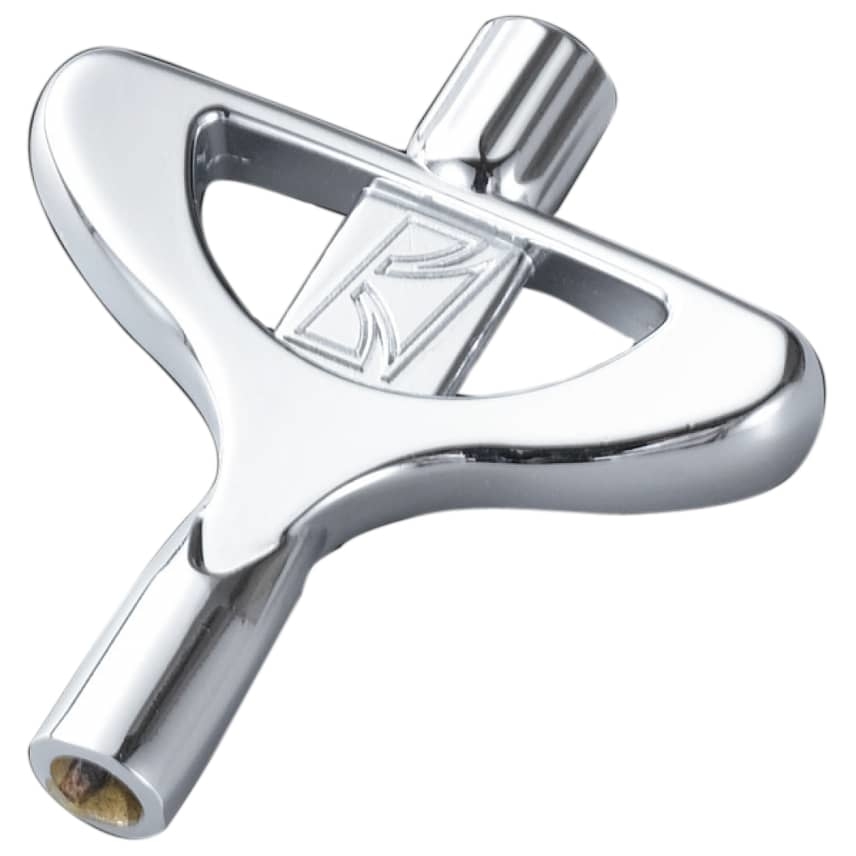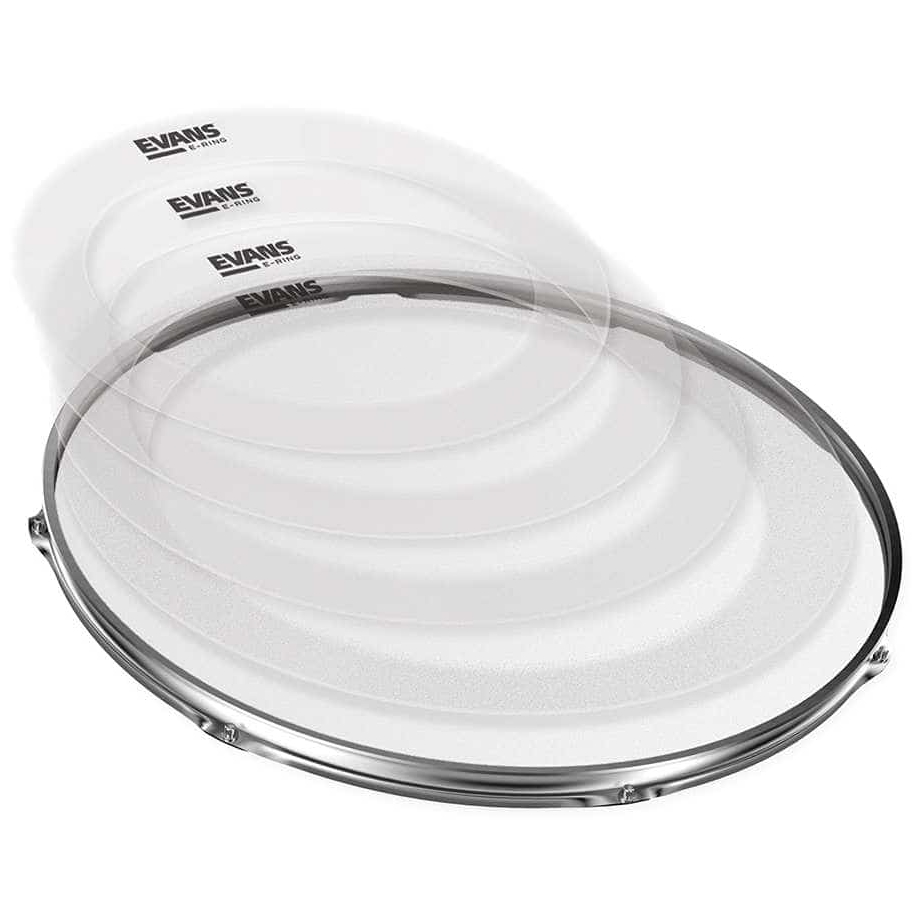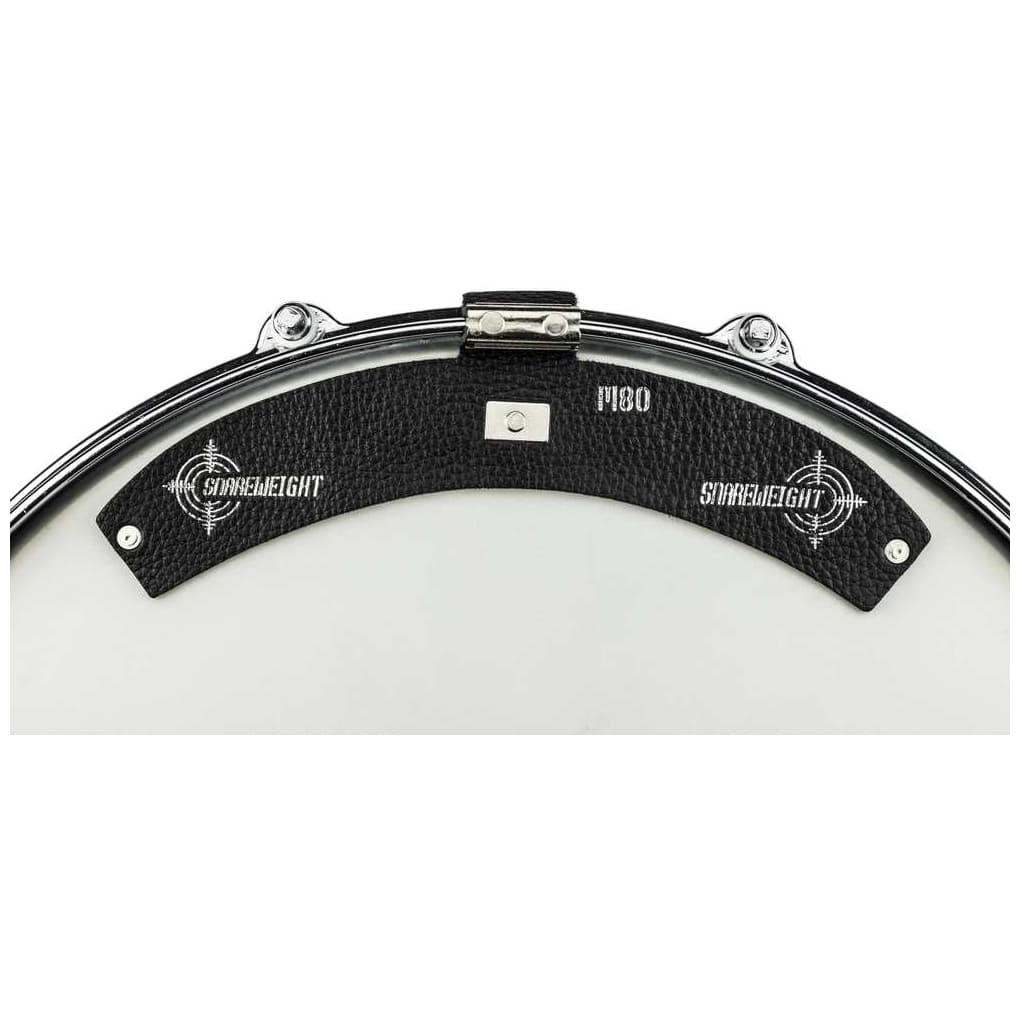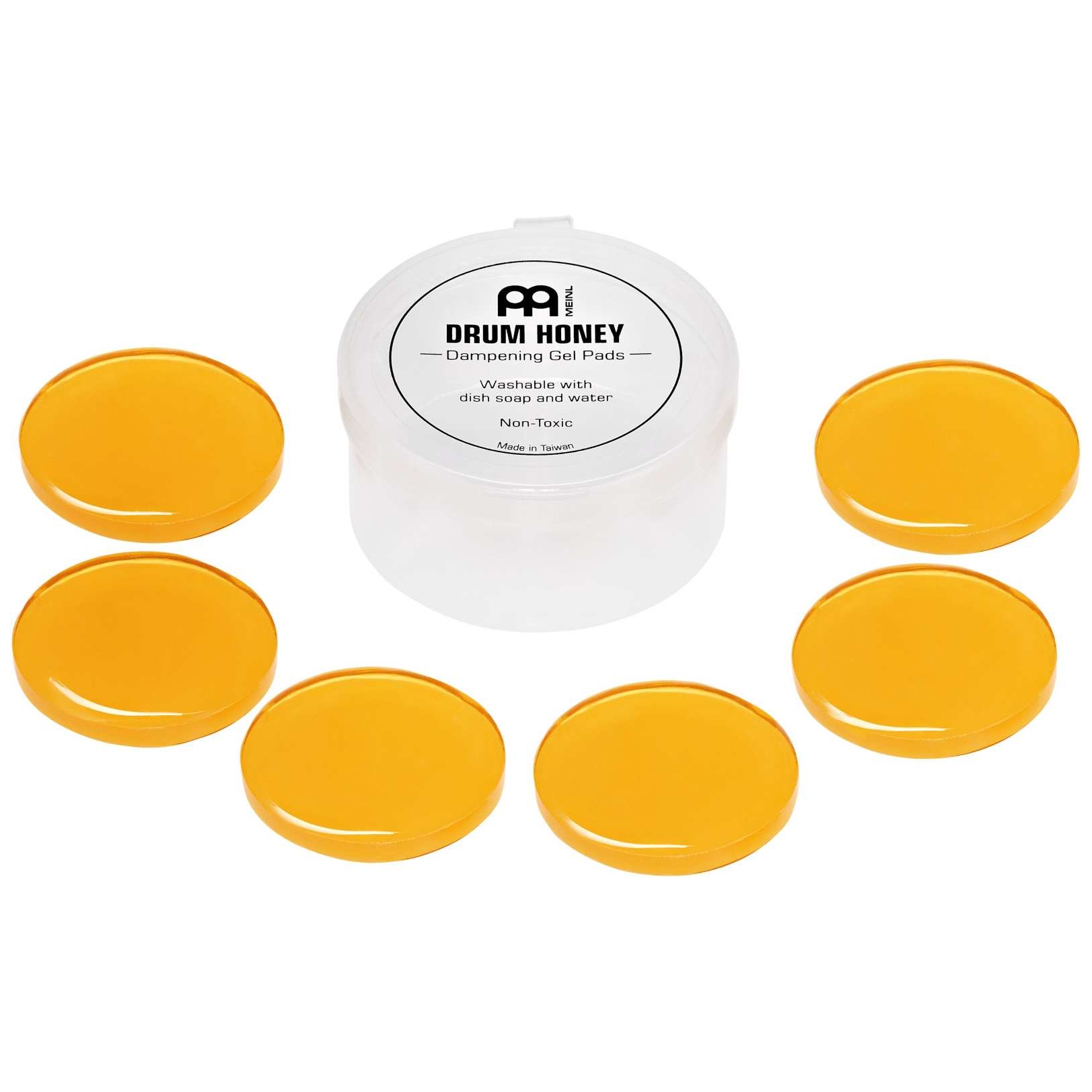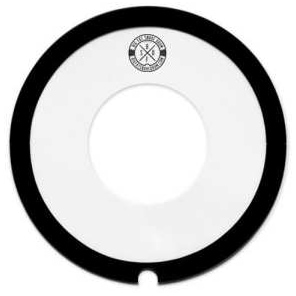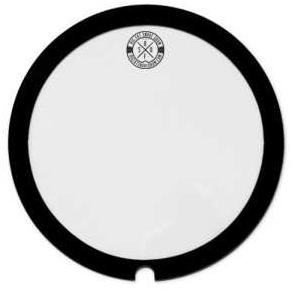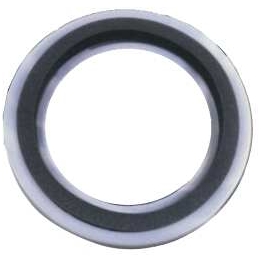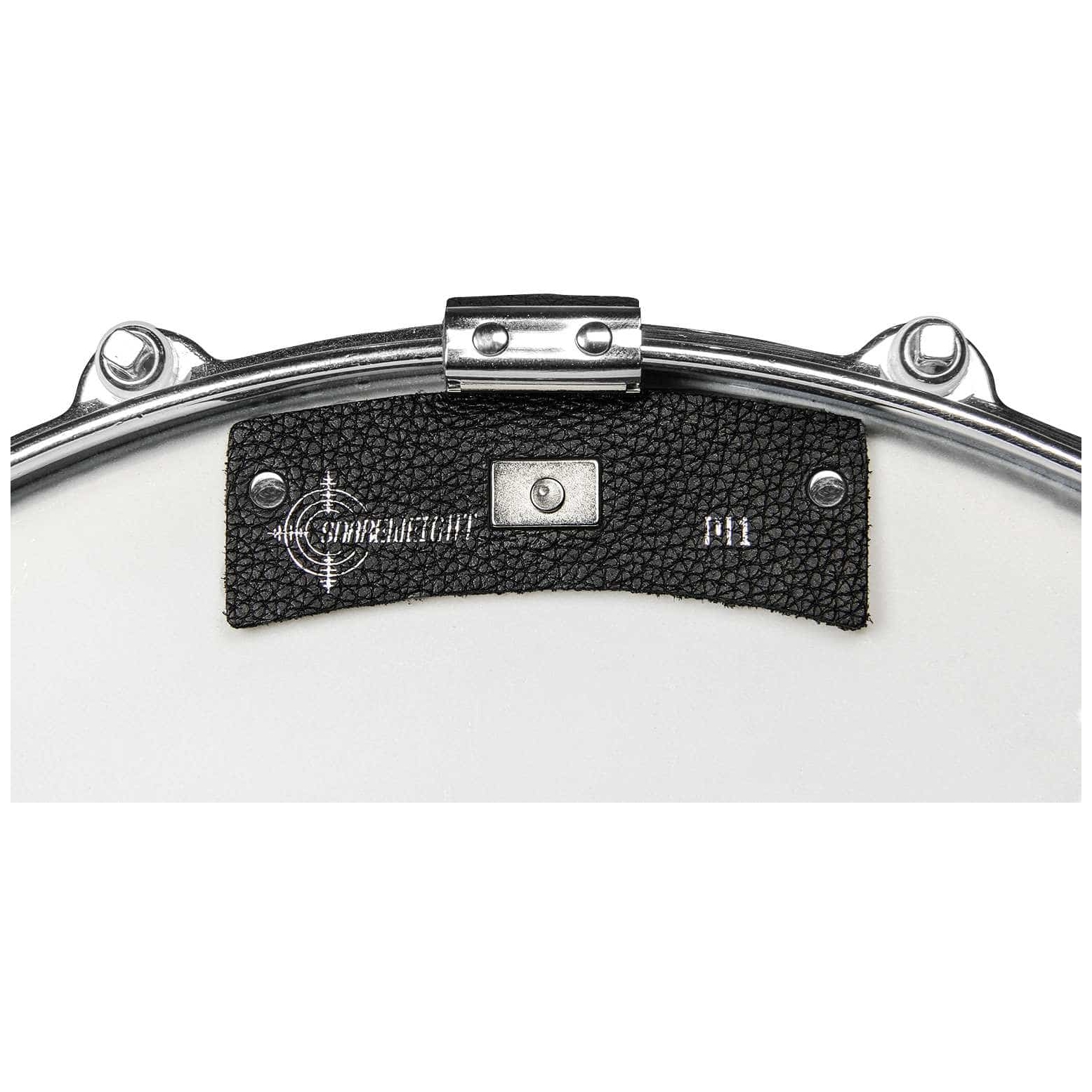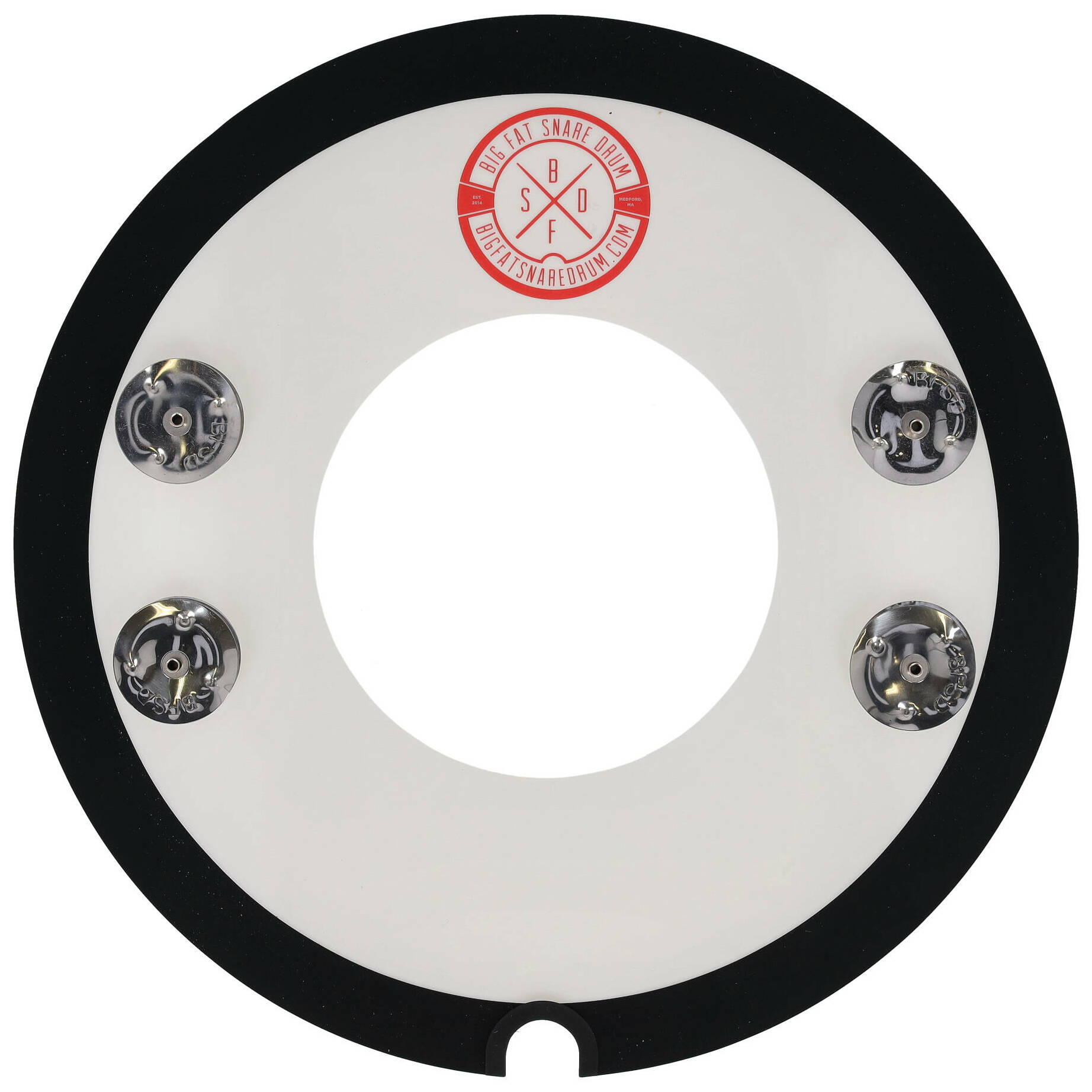What do I have to consider when tuning a drum set?
Get your drums in the tuning! On the following pages we will cover the theme of drum tuning. In addition to the tuning itself, this also includes an introduction to drum theme : We will introduce you to the different types and their sound characteristics and give you tips and tricks for changing the drum head.
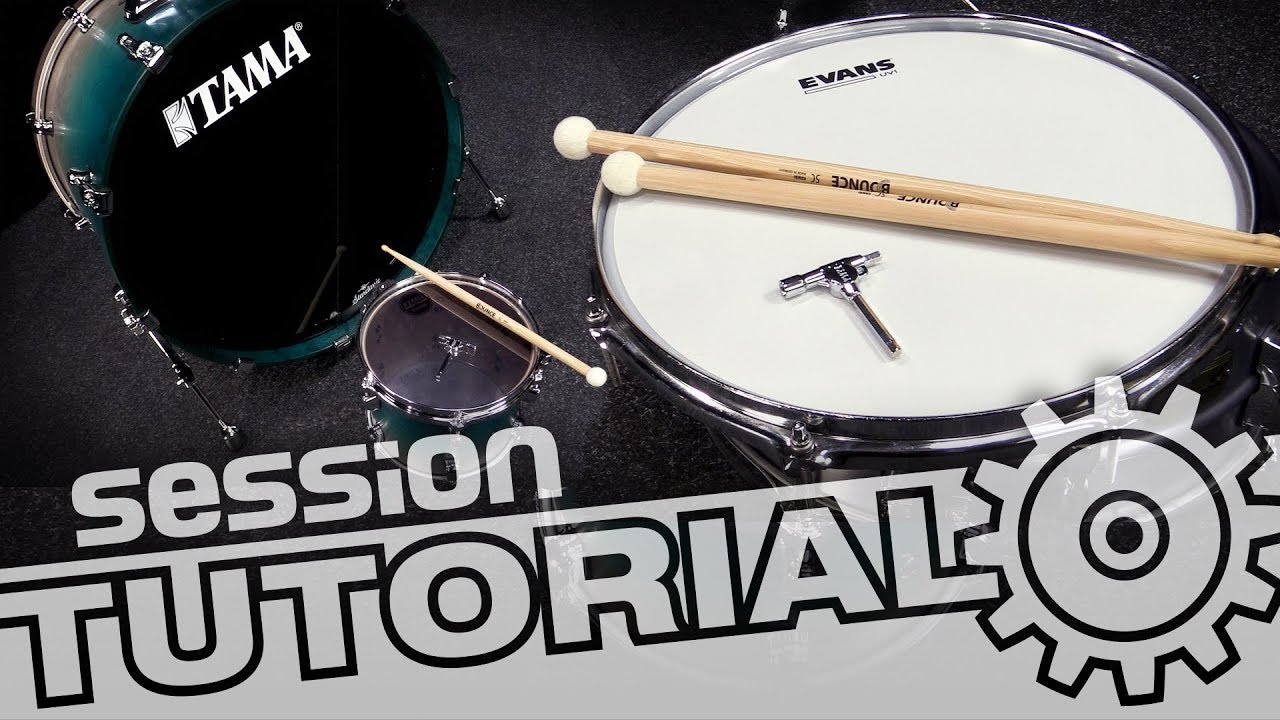
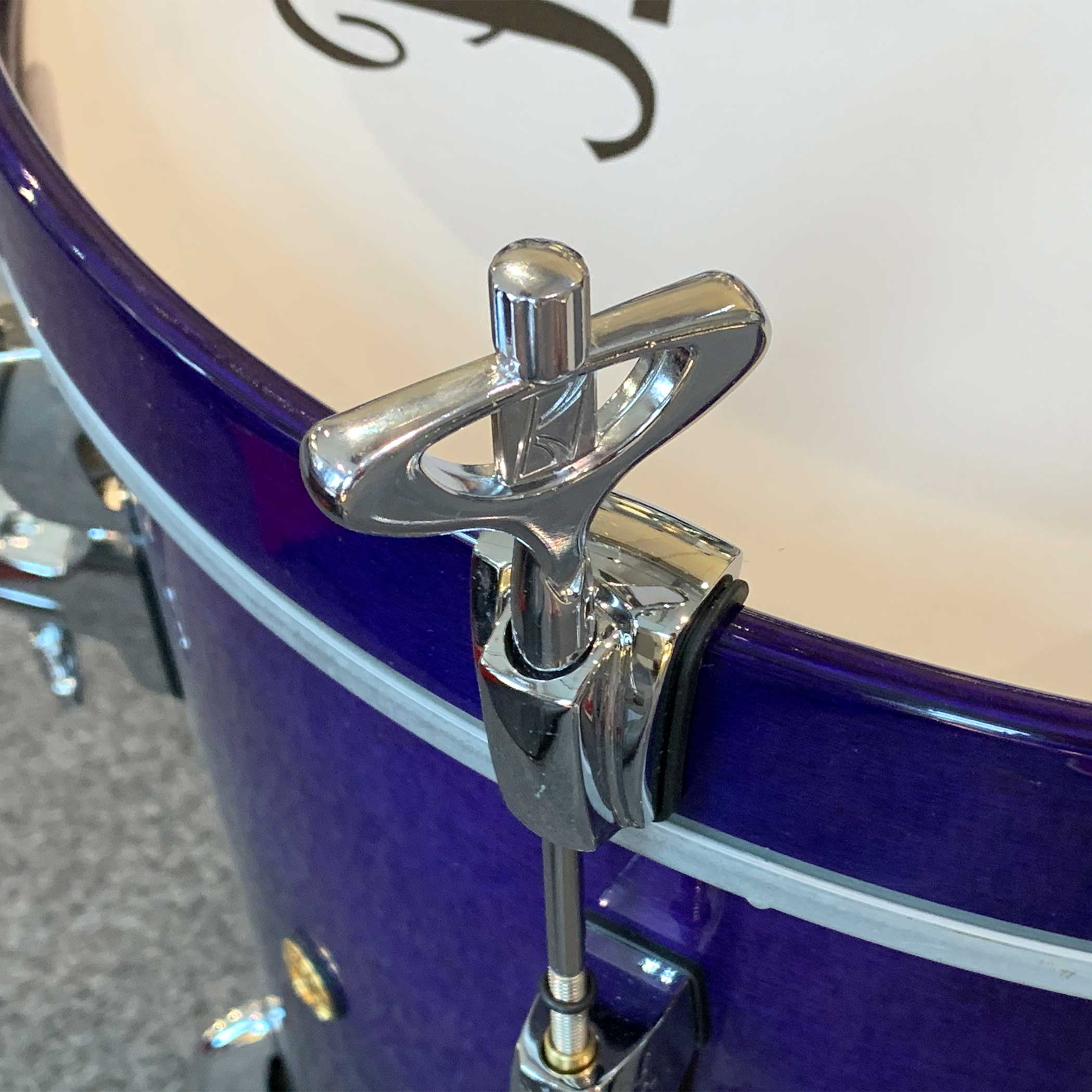
Impact and resonance heads
There are hundreds of different skins with different diameters, thicknesses and colors. The most important distinction, however, is between drum heads and resonance heads. The head skin is located on the top or front of the drum and is played directly with the sticks. Batting heads are therefore also referred to as “batters” in English. The resonant drum heads on the underside or back of the drum is also involved in producing the sound generation , but is not played. Batter heads have to withstand much more than resonance heads, and are therefore often thicker and have to be changed more frequently.
Tip: Determine fur size
The head size is indicated by the diameter in inches (or the symbol: "). If you don't know the size of your drum, all you need is a tape measure or yardstick, a calculator and the following conversion to calculate the size in inches. Measured By the way, it is always on the inner edges of the metal hoop that surrounds the fur.
1 inch = 2.54 cm
You measure the diameter in cm and divide it by 2.54 to get the measurement in inches. Example: Your snare head measures approximately 35.6 cm:
35.6 ÷ 2.54 = 14.015
You need a snare head with a diameter of 14 inches.
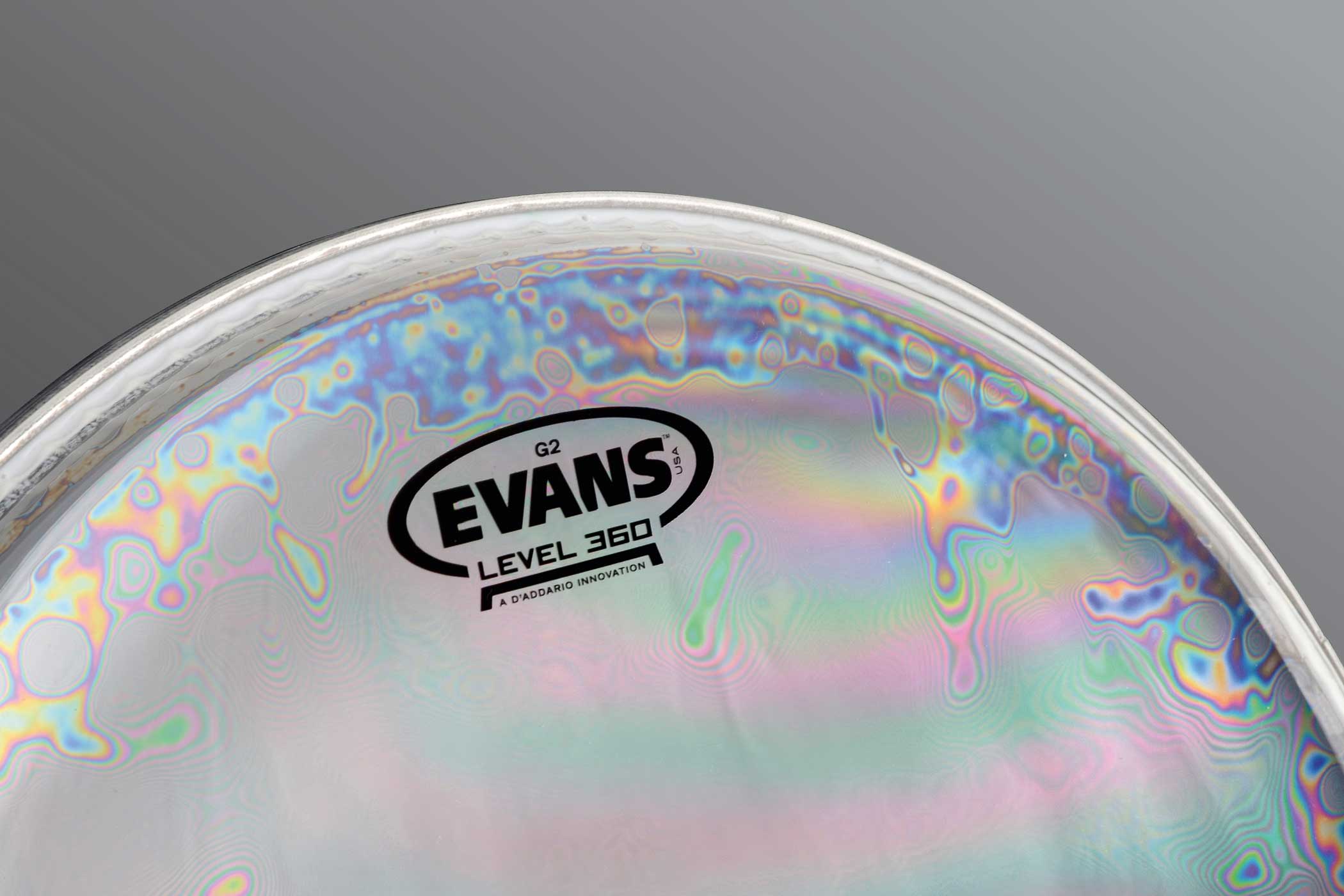
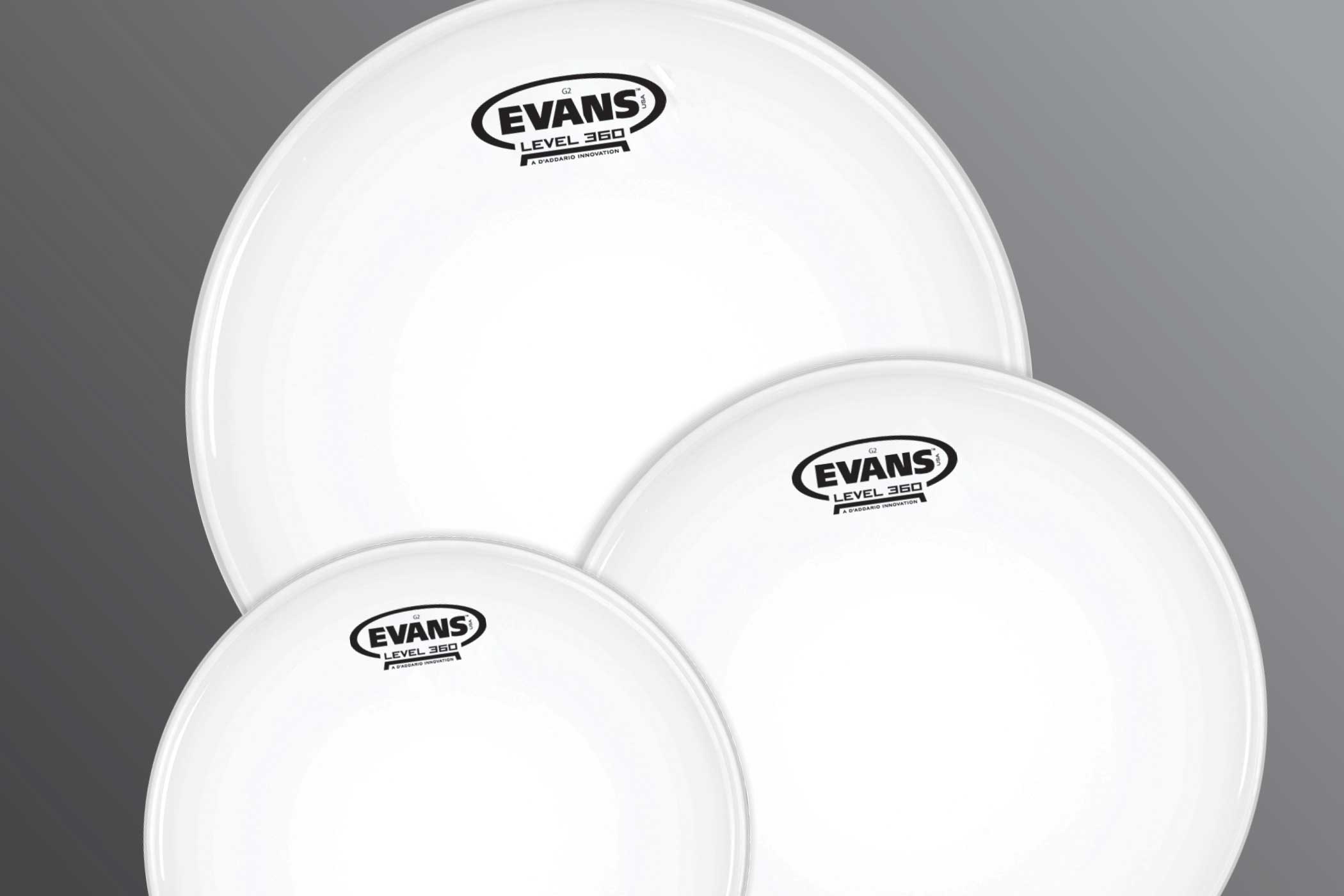
The fur types
No matter whether it's the bass drum, the snare or the toms, there are different types of all heads. The easiest way to tell is the difference between Clear (smooth and transparent) and Coated (coated). Nowadays you can find other variants of coated heads such as: B. The onyx skins with a black coating or the slightly thinner and more transparent coated etched skins. The coating ensures that the fur lasts longer. The sound is a little duller than with clear heads and the tone is a little shorter. Neither type is better or worse, it all depends on your taste and the music you make. At the end of the brochure you will find an overview with which you can compare all the properties at a glance. The second big difference is between single-layer and double-layer skins. This difference is harder to see. With two-layer clear skins, you can see a rainbow-like iridescence that is created by the refraction of light from the two different layers of fur.
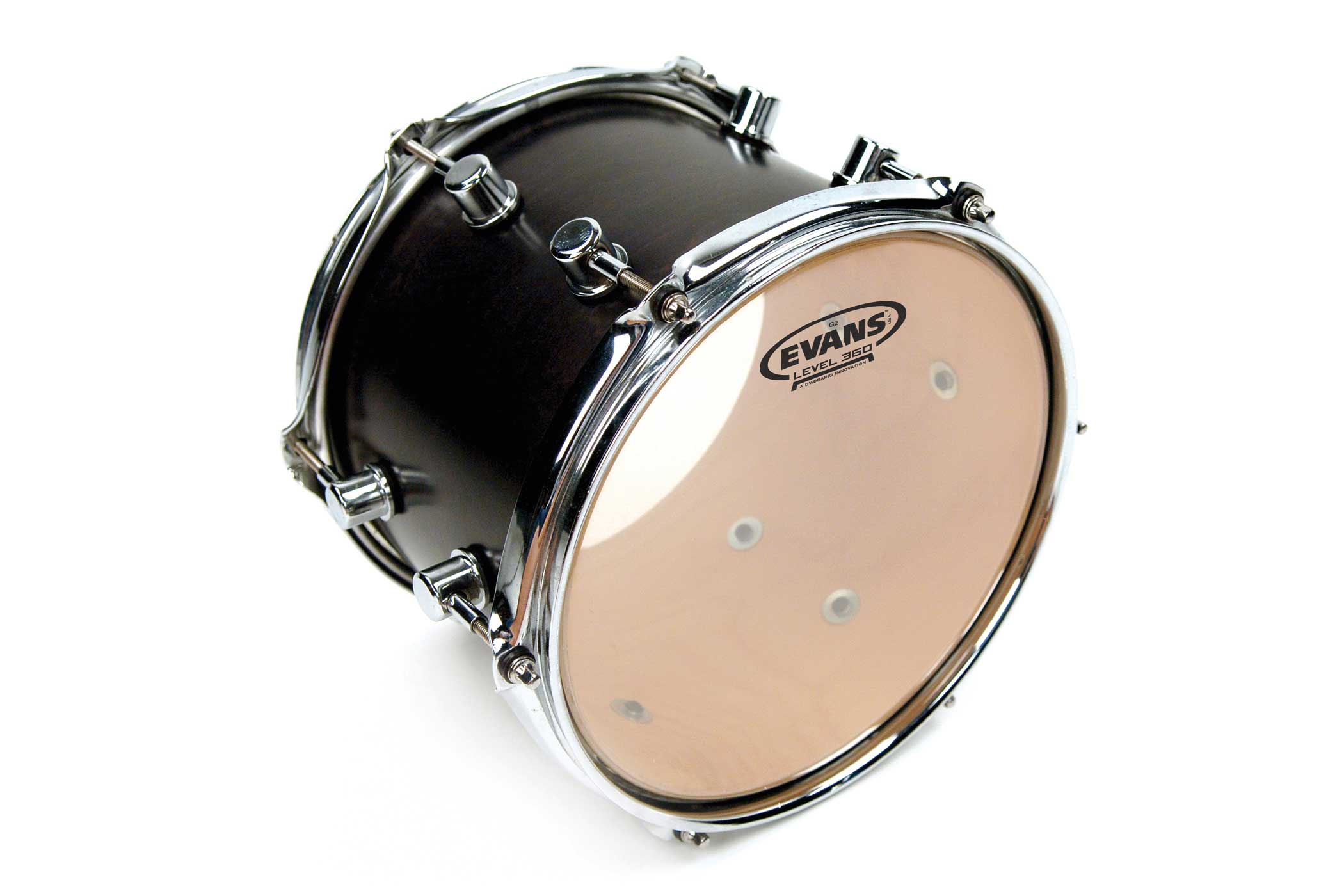 | 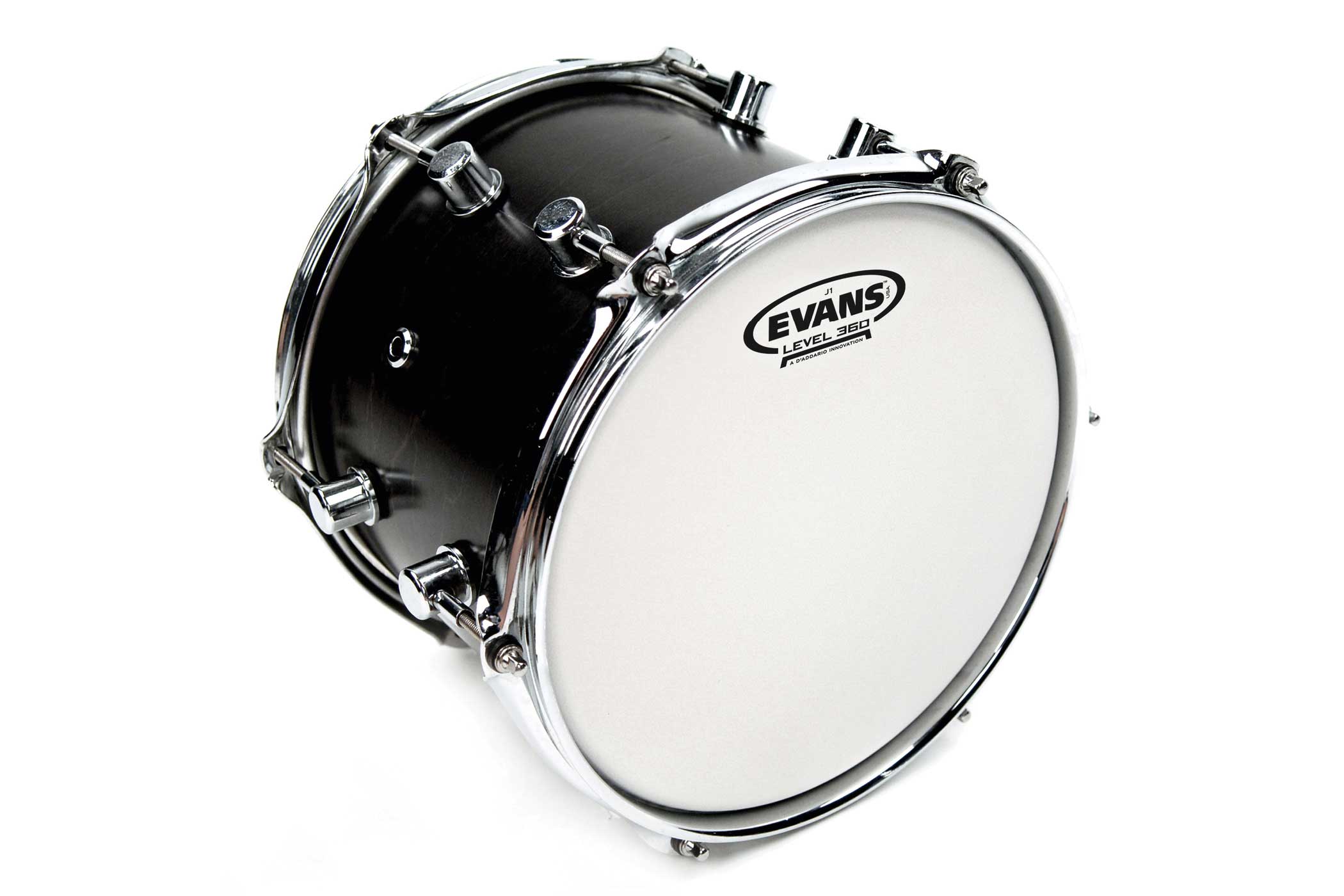 |
| Clear (smooth and transparent) | Coated |
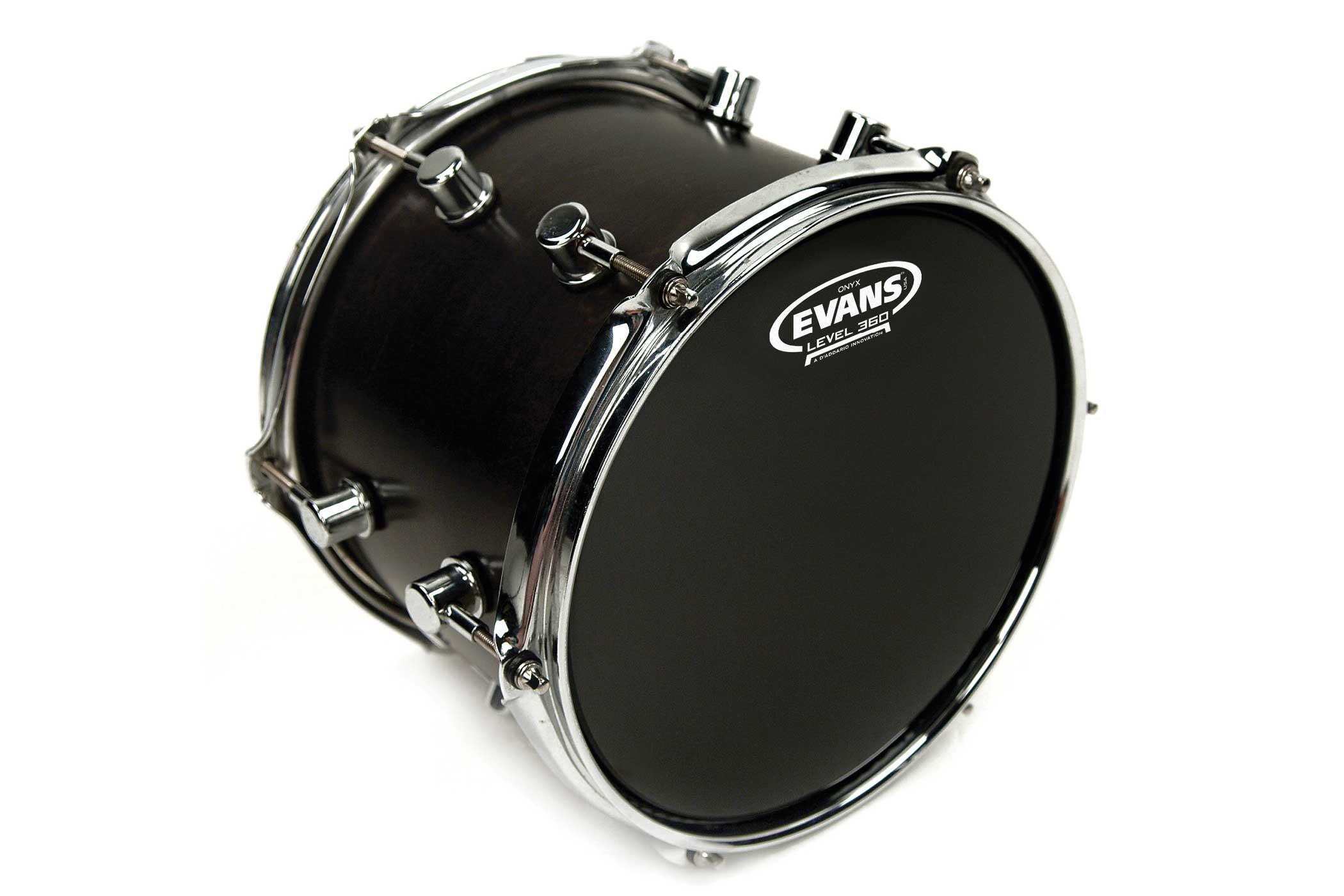 | 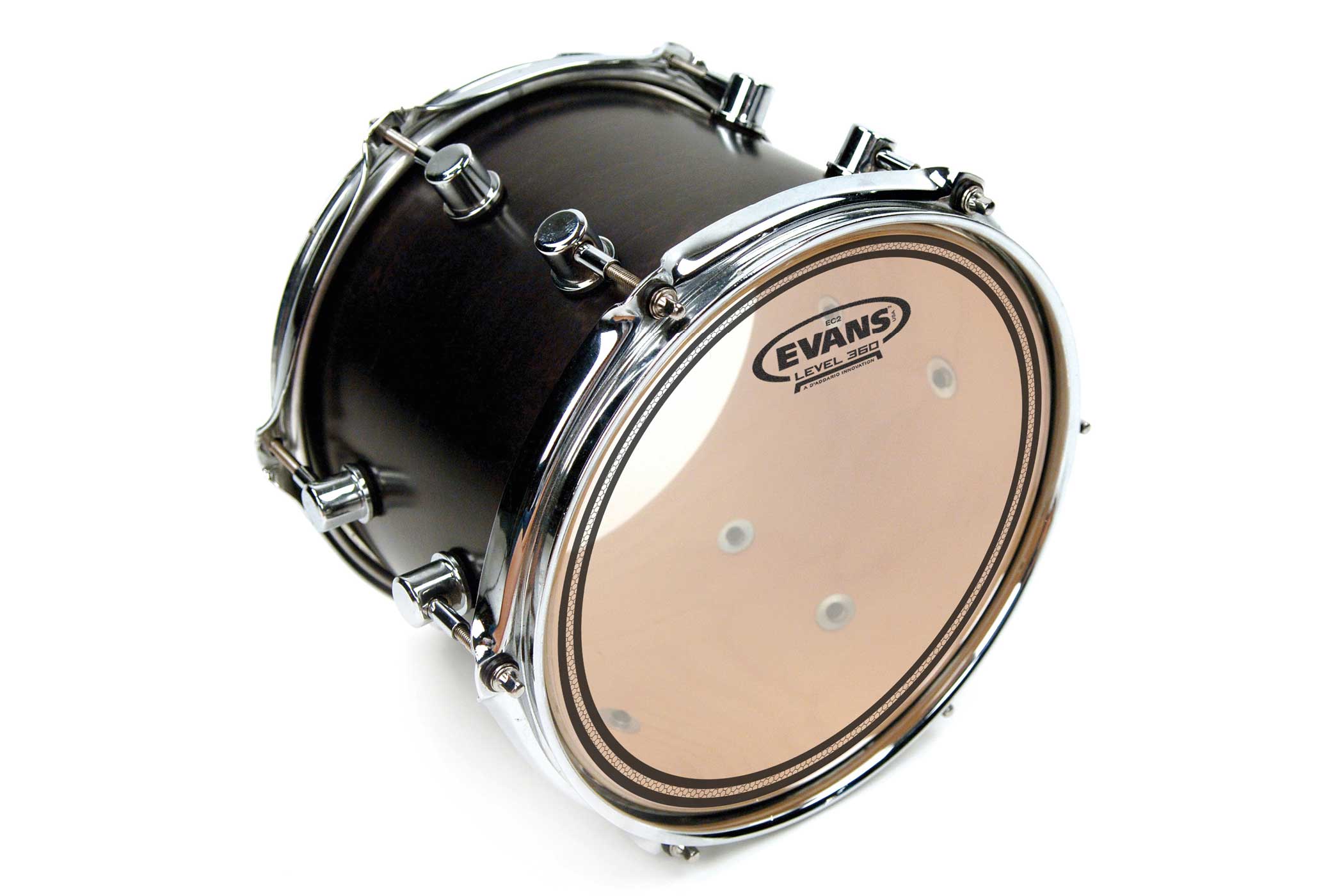 |
| Onyx fur with black coating | Clear fur with integrated damper |
There are both clear and coated heads in single and double layer type. They also differ in sound and durability. Single-ply heads sound longer and have more tone, but they usually don't last as long. Two-ply heads decay more quickly and have less sound, but they last a little longer. A final big difference can be found in skins that already have damper incorporated. If you want to produce a particularly short sound, this variant is ideal. Not only does the fundamental tone of the drum become shorter, the so-called overtones are also reduced. Overtones resonate in addition to the fundamental tone and - as the name suggests - are higher and brighter in sound. This is sometimes perceived as annoying and can be alleviated with steamed fur or other aids (see “Little Helpers”).
Why session?
Items from our huge range of in-stock items are usually dispatched the same day!
The drum tuning
Now that you've gotten to know the most important differences between the heads, we can get started with the actual tuning. With a few exceptions, this works the same for drum heads and resonance heads on every drum. With smaller drums you have fewer tuning screws and with larger drums you have more tuning screws . Here we use a drum with eight tuning screws like some 14-inch snares.
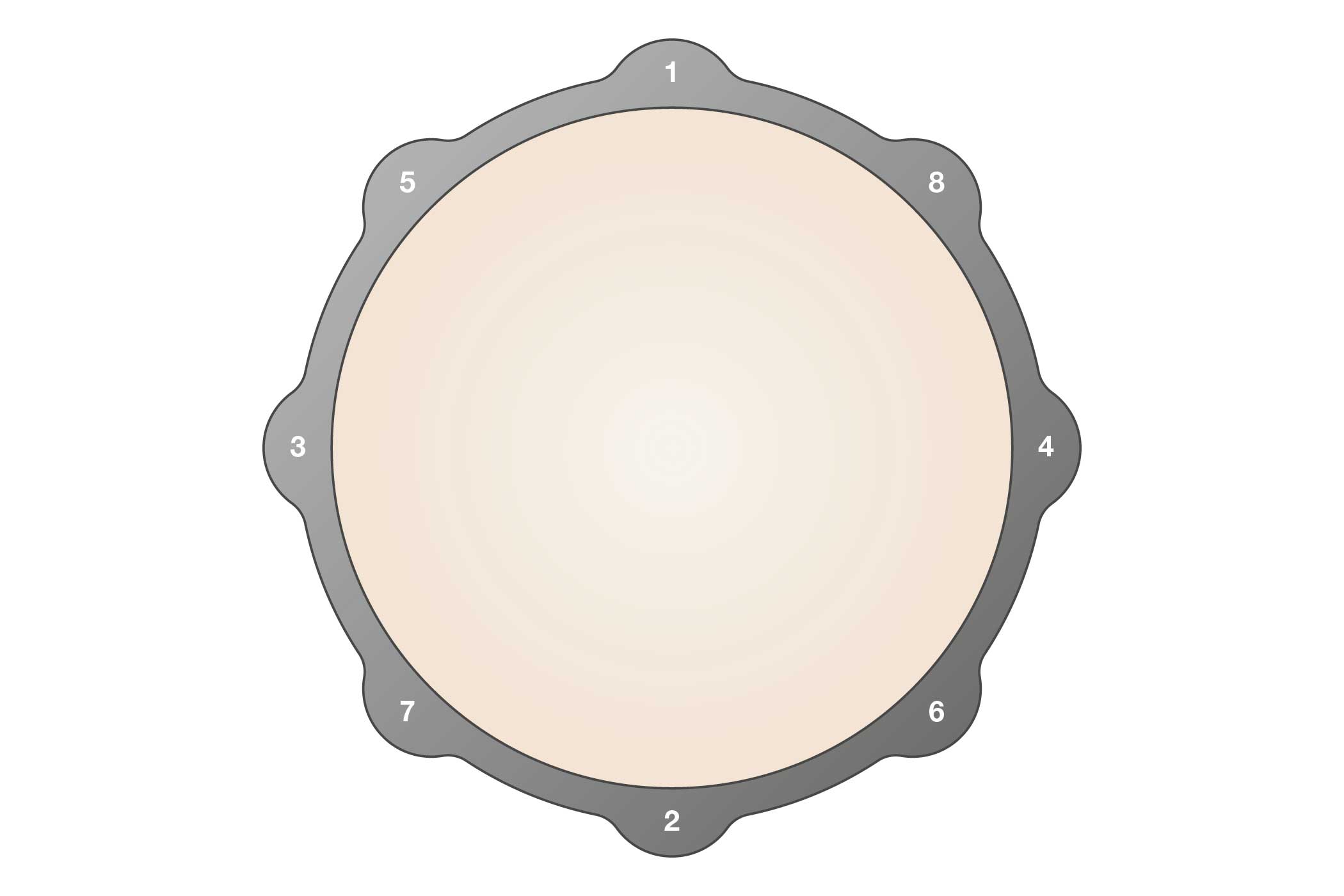
Start by tightening the screws all around with your fingers until you can't go any further. In the picture you can see the order in which the tuning screws are then tightened with the tuning key.
Tightening crosswise ensures that the head presses evenly onto the rim of the drum and does not lie crookedly. Start with one turn per screw until you get back to the first one. In the second round you only do 1/2 turn, then 1/4 etc. This way you slowly get closer to the desired tuning . The tighter the head is, the less you have to turn the screws to change the tone.
Before tightening a tuning screw, tap the head directly next to the screw, for example with the tuning key or a stick. This means you hear the sound produced by the tension of just that one screw, and not the overall sound of the drum.
The better the drum will sound later, the more similar the tones of the individual tuning screws are. How high or low these tones are is again up to your taste and the style of music you play>
Whether you start with the hitting head or the resonant drum heads doesn't make much of a difference. There are three possibilities for the relationship between the moods of the two sides:
- The head skin is tuned higher than the resonant drum heads: the tone becomes longer and deeper as it fades away. The resonant drum heads vibrates a little later than the head skin and the tone then changes downwards due to the lower tuning .
- The head skin is tuned lower than the resonant drum heads: the tone becomes shorter and higher as it fades away. The resonant drum heads is tighter here and produces a higher tone.
- The impact head and the resonant drum heads are tuned the same: the sound is louder compared to the other two options, sounds long and, above all, clean. Because both heads produce the same tone, the overall tone becomes louder and does not change up or down.
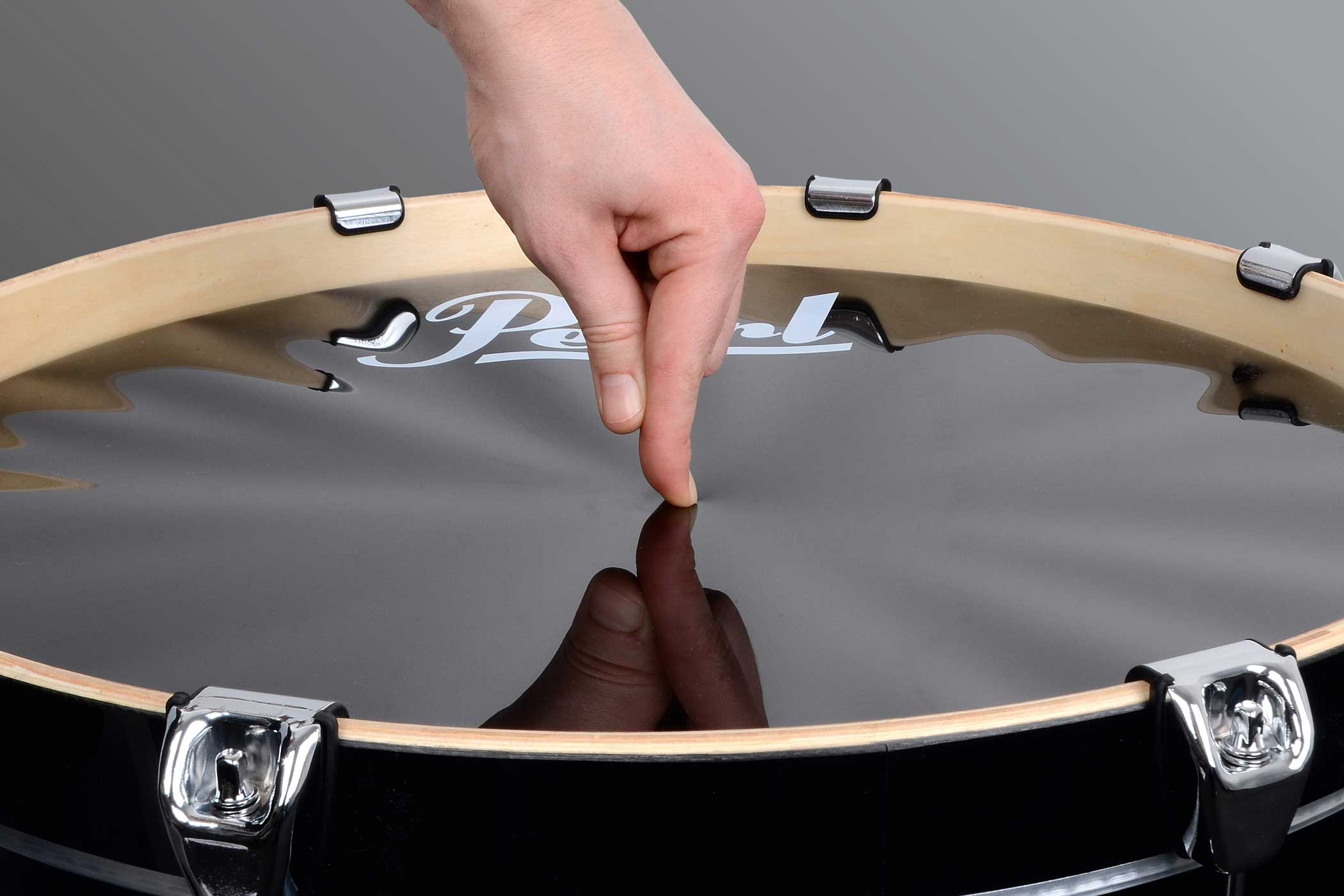 | 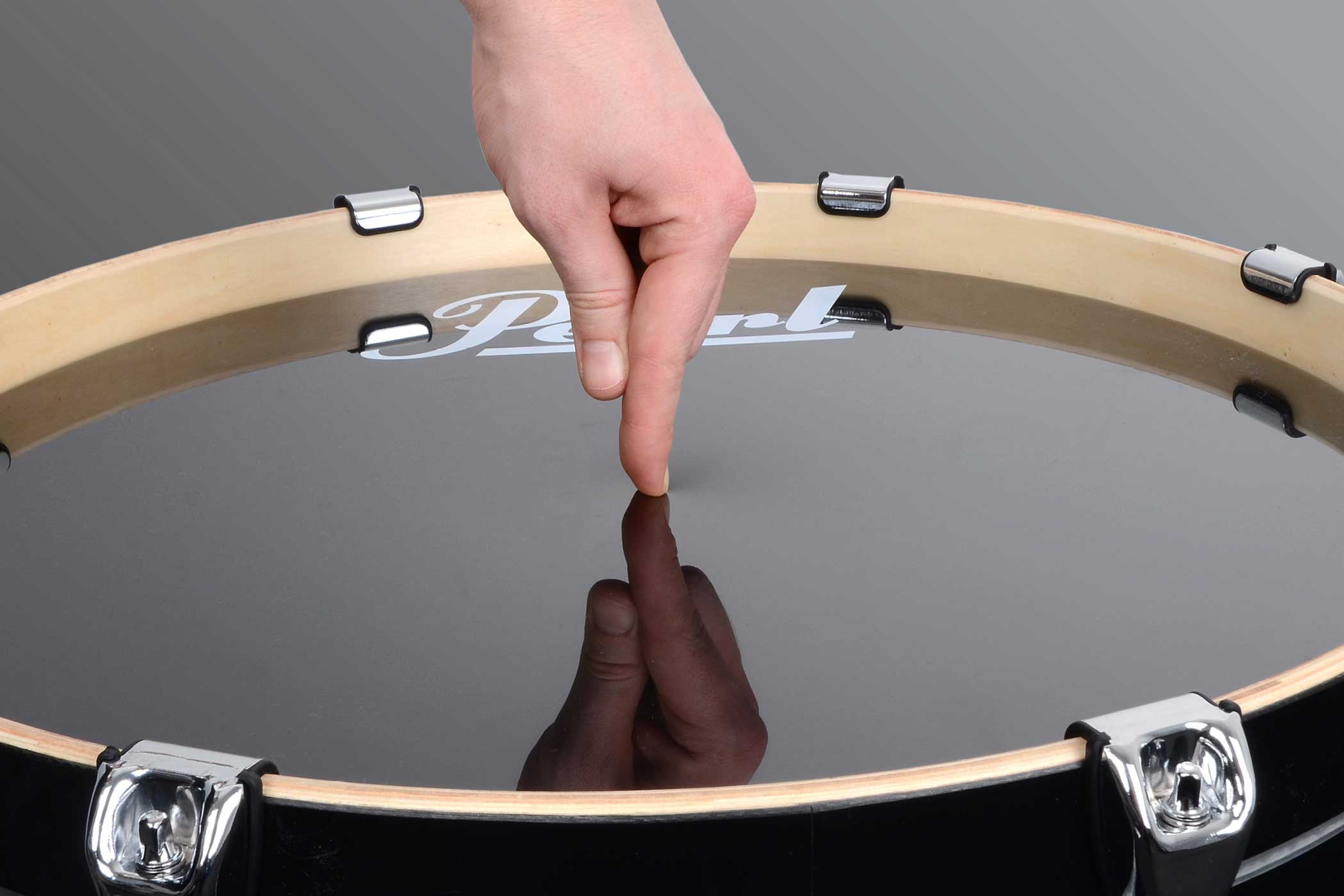 |
| too loose | sufficiently tensioned |
Since there is no right or wrong when it comes to tuning , your ears and your taste are required. If you like the sound of your drum kit, it's probably in good tune. Of course, we have a few tips for you that can help you achieve this goal quickly:
- None of your fur should be so loose that it wrinkles. Use a finger to press the center of the fur to find creases at the edges.
- If you stretch a skin too tightly, the tone will be extremely short and sound as if it had been cut off. In this case, loosen all screws evenly.
- For your toms, start with the lowest or largest and then continue with the other toms in order down to the smallest. Of course it works the other way around too. However, it may happen that you cannot tune the largest tom as low as you would like because the head would be too loose.
- The bass drum doesn't necessarily have to be tuned to match the toms. Most drummers view the bass drum as its own drum and therefore tune it independently of the toms. Otherwise, the same applies to the relationship between the hitting head and the resonant drum heads as with toms.
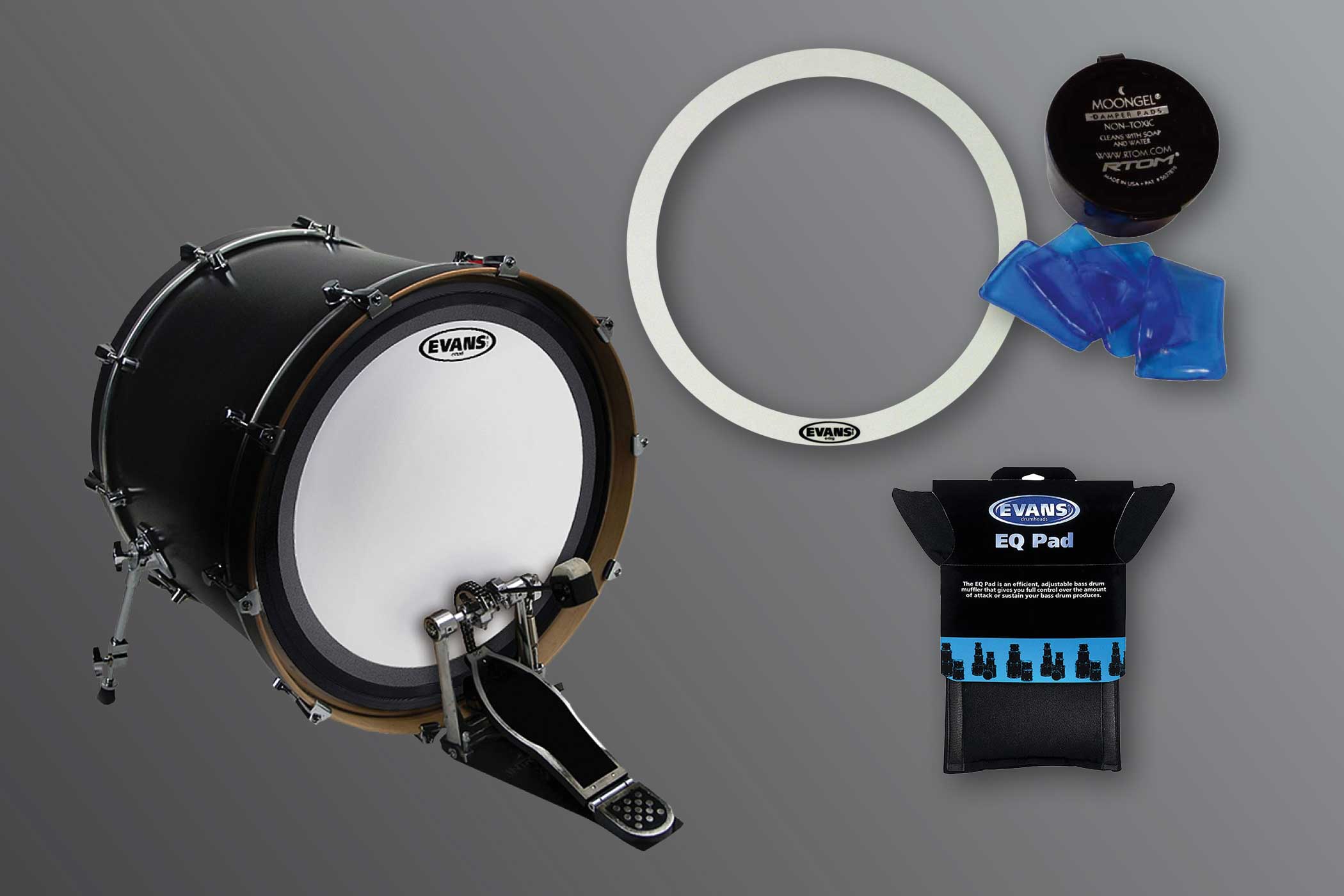
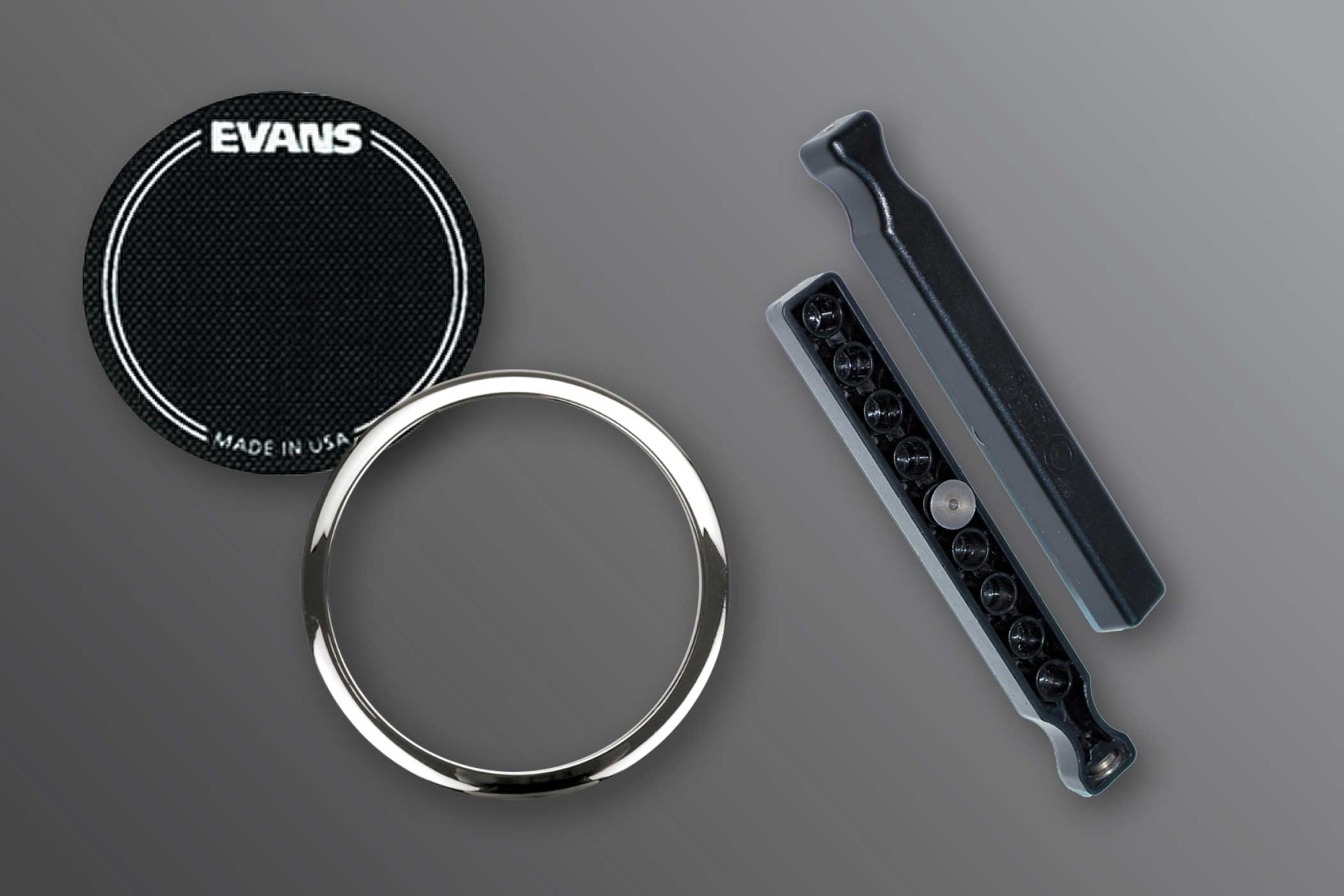
Special features when tuning the bass drum
Since the beater hits the fur with great force, you can extend its life with a special protective sticker. To change the sound of the bass drum, you can cut a hole in the resonant drum heads . This hole also offers an advantage when you are on stage with your band: the sound engineer can better place the microphone on or even in the bass drum, which ensures a fat sound . Attention: Please do not use a normal knife for this, it is dangerous for you and the fur! There is a special hole cutter that is easy to use and relatively safe for your fur and fingers. If you are unsure about this, you can also use our service and have us cut the hole in a newly purchased fur or one you brought with you. To prevent the hole from tearing, you can reinforce it with special rings. This is not only practical and extends the life of the resonance head, but also looks very good. Of course, you can also have us carry out this mounting
If you would like to find out more about tuning your bass drum, we recommend our additional guides: The perfect bass drum sound.
Useful helpers for the perfect bass drum sound
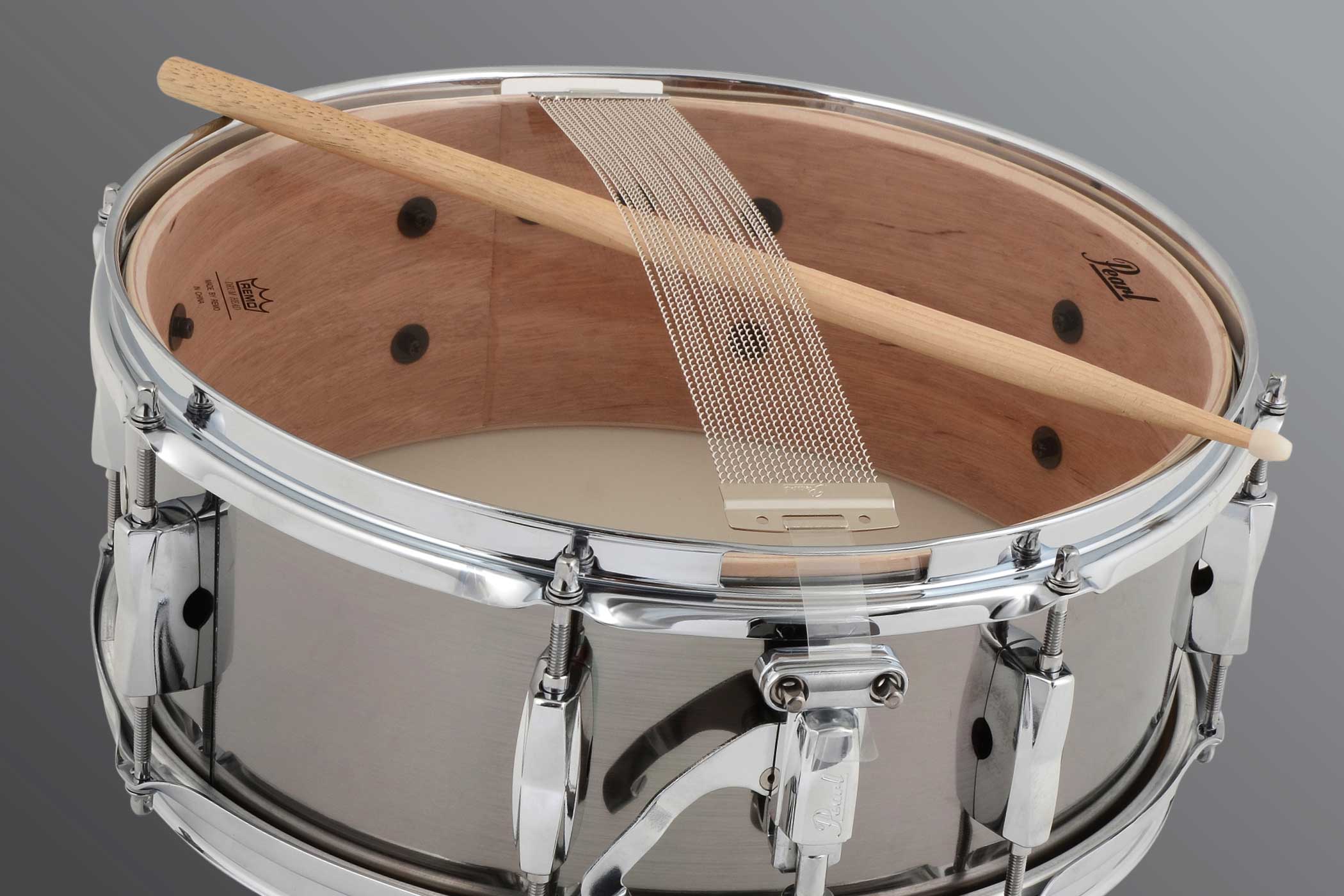
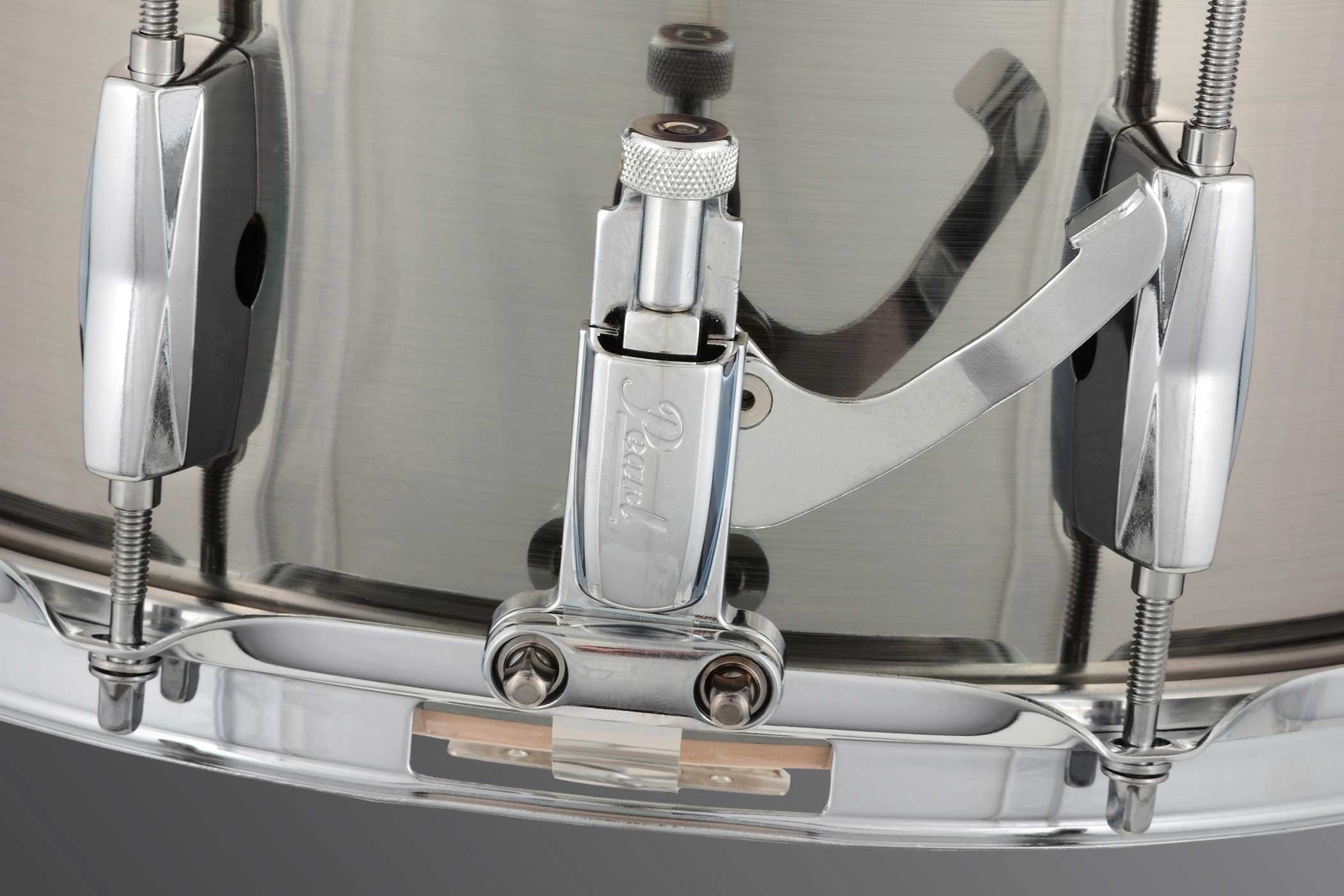
Special features when tuning the snare drum
In addition to the resonant drum heads , there is also the snare wires on the underside of the snare. This is responsible for the typical buzzing sound of the snare. If you remove it from the resonant drum heads, the drum sounds like another tom. The carpet must be removed to change the resonance head, but it can remain in place for tuning. First, press the lift on the side of the snare so that the carpet is loose. Then use a stick as a spacer between the carpet and the resonant drum heads so that you only hear the head without any buzzing. Attention: Please only use your fingers to tap the head of the tuning screws ! Since the resonant drum heads of the snare is usually very, very thin, a stick or tuning key could damage the head. You can tune the snare resonant drum heads like any other head. The tension also influences the buzzing of the carpet. The carpet rattles less on a loosely stretched resonant drum heads , and more on a more tightly stretched one. You can also adjust the carpet itself; use the adjusting screw on the lift to tighten or loosen it. Here it is the same as with the resonant drum heads: tight tension = less buzzing, loose tension = more buzzing.
More little helpers for drummers
There are many ways to influence the sound of your drums. Some of them revolve around the theme of damper. Many drummers use single-ply heads to get a lot of tone, but depending on the style of music they also want a short and crisp tone. Thanks to various dampening systems, you don't have to change the skin straight away:
Moongel and Co. are small cushioning cushions made of special rubber that are placed on the skins. They come in different shapes, colors and sizes. They provide a shorter, somewhat dull sound and can be removed at any time.
To create even more damper , there are so-called E-rings. These are plastic rings that are precisely tailored to the corresponding drum sizes. They have a larger support surface and therefore provide greater dampening.
There are other damping options for the bass drum: Some bass drum heads already have a dampening system incorporated. The so-called EMAD head comes with two replaceable foam rings that can be inserted depending on how much dampening is required.
The bass drum is often muffled from the inside with a pillow or top . If you don't have anything suitable left, you can: B. use the EQ pad . It is attached to the bass drum using Velcro and presses against the head skin. When struck, it separates from the head so that the sound does not disappear completely, then it lies against the head again to muffle it. Dampening is not a must, many drummers prefer the sound without damper. Try what you like.
 Trusted Shops: 4.84/5,00 (10085)
Trusted Shops: 4.84/5,00 (10085)

